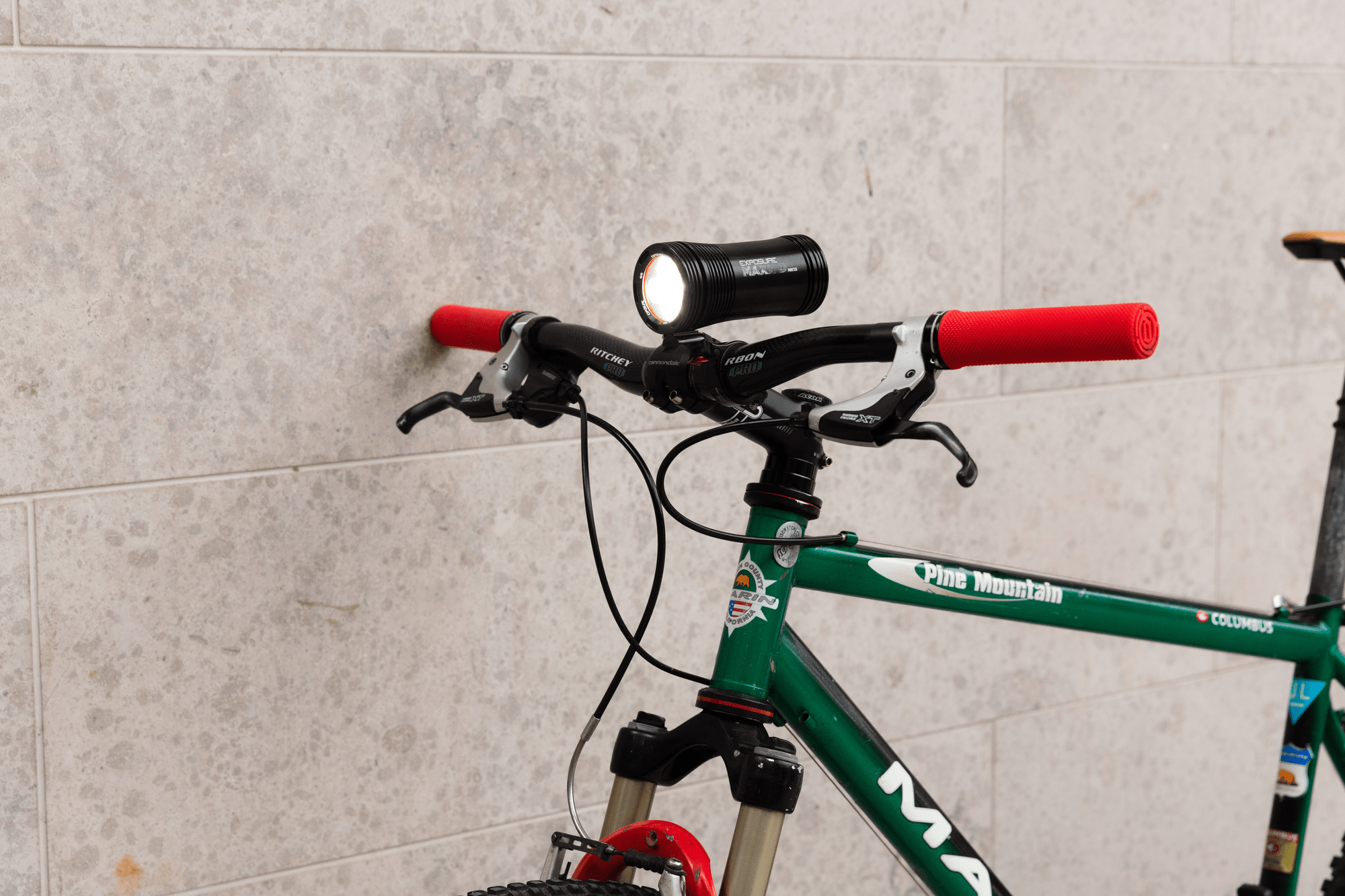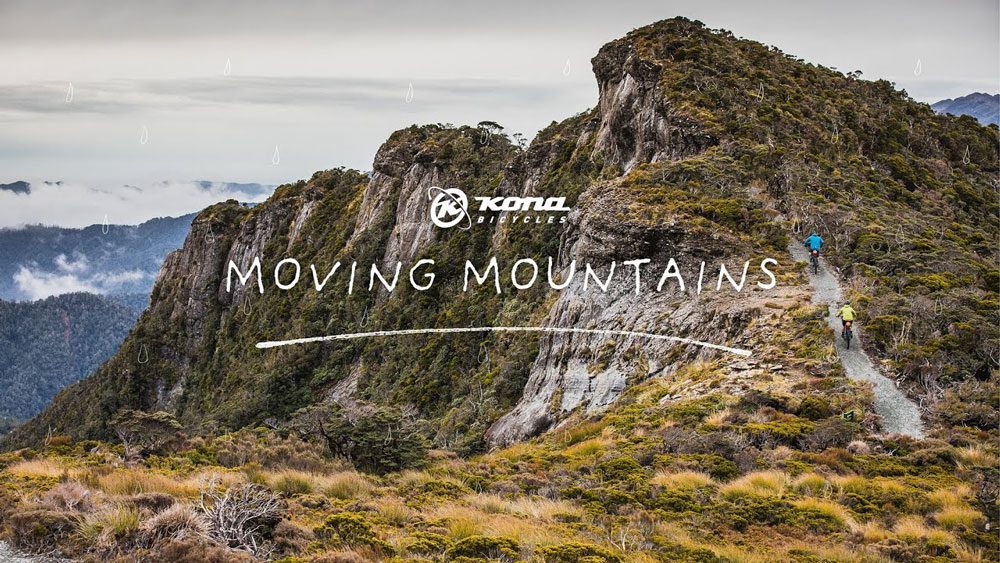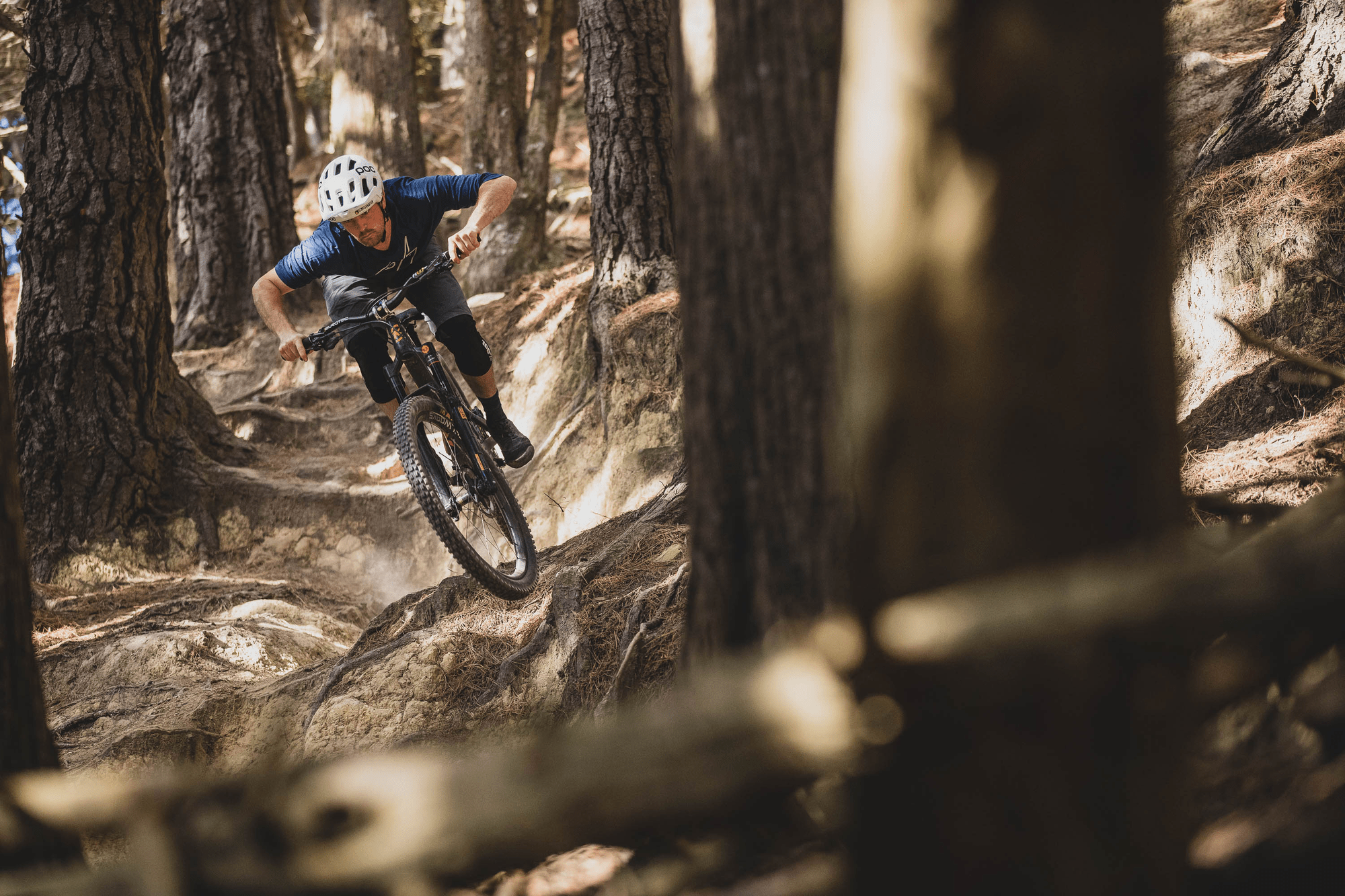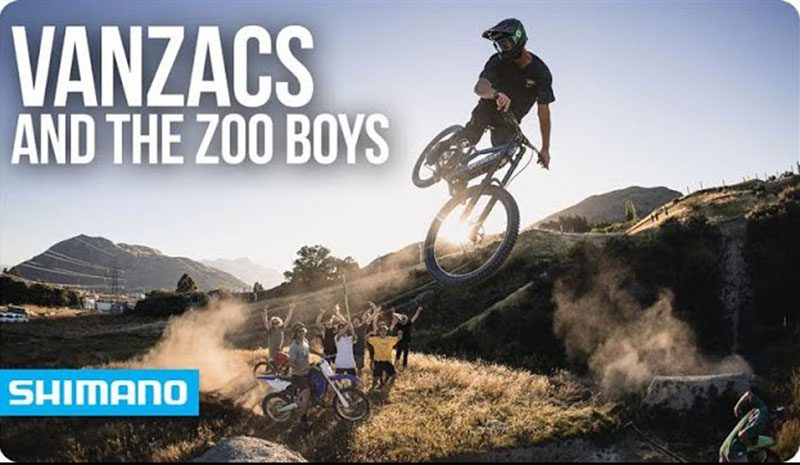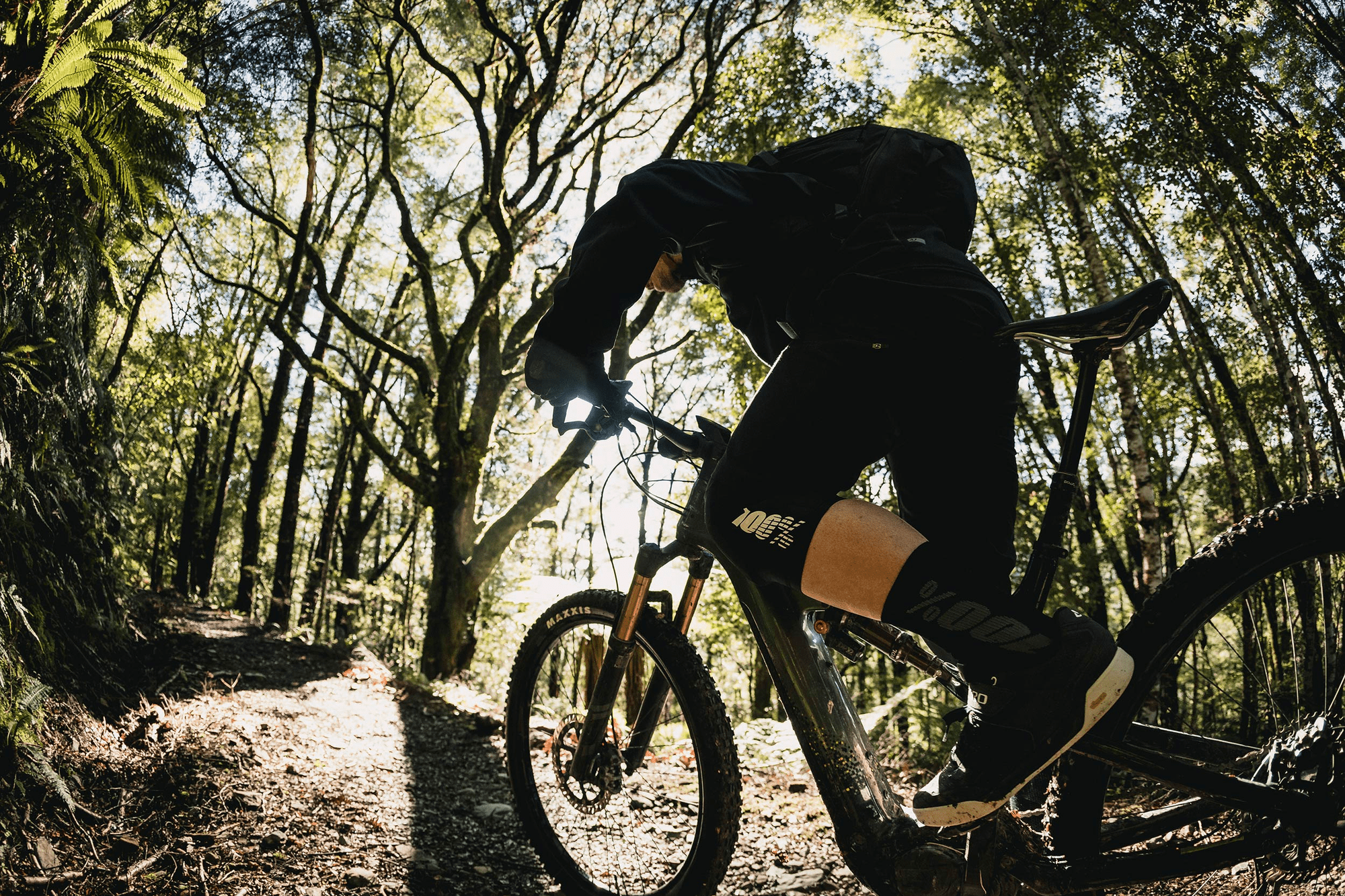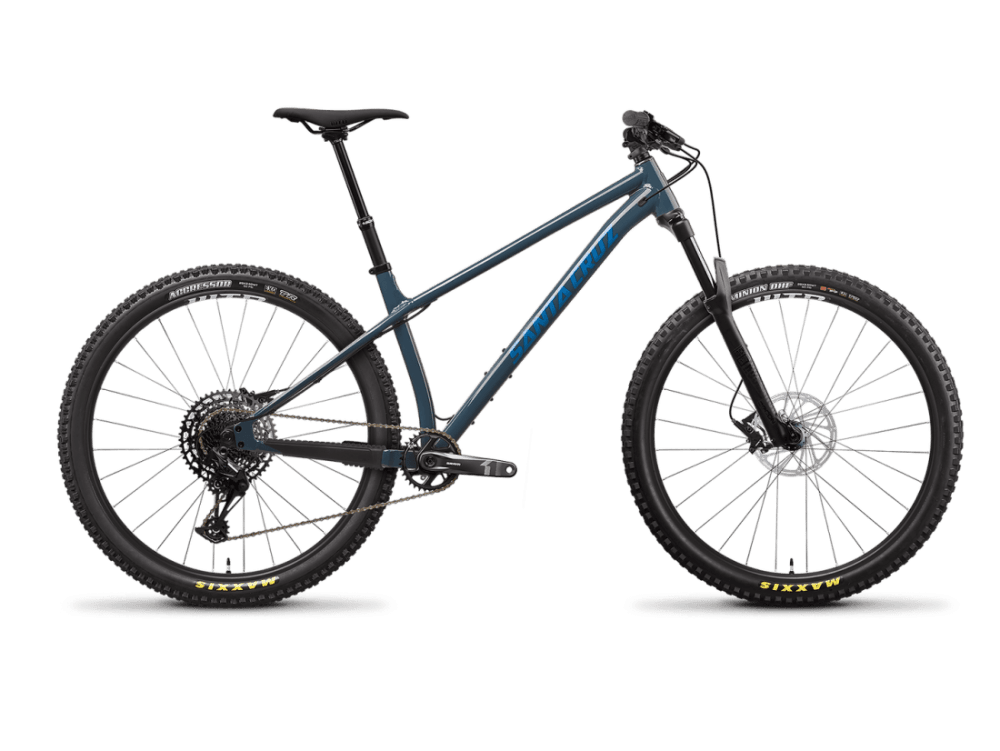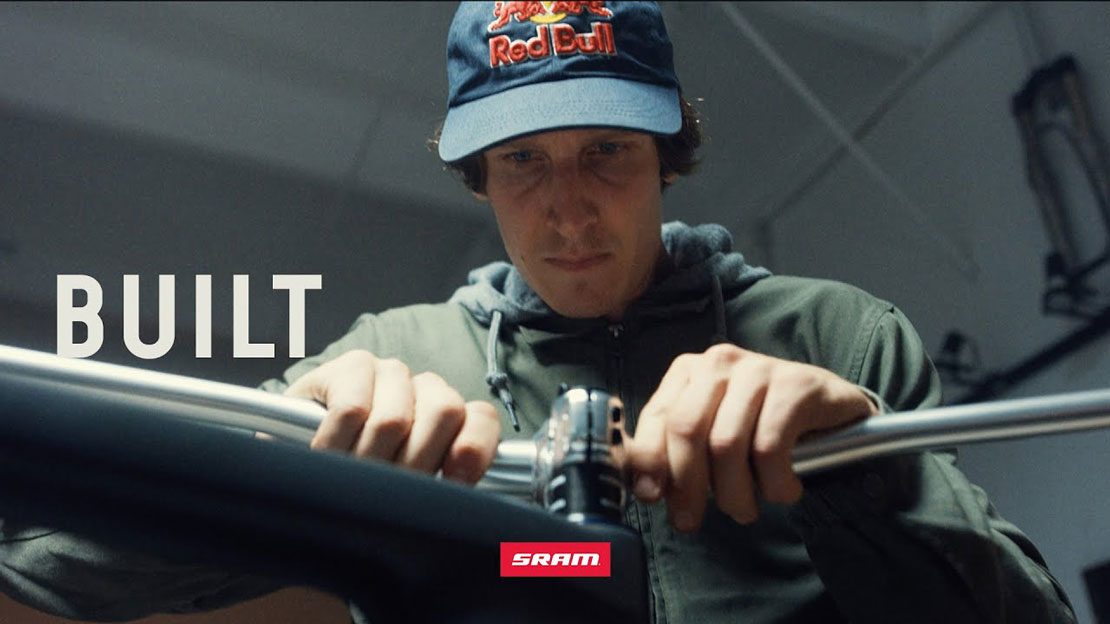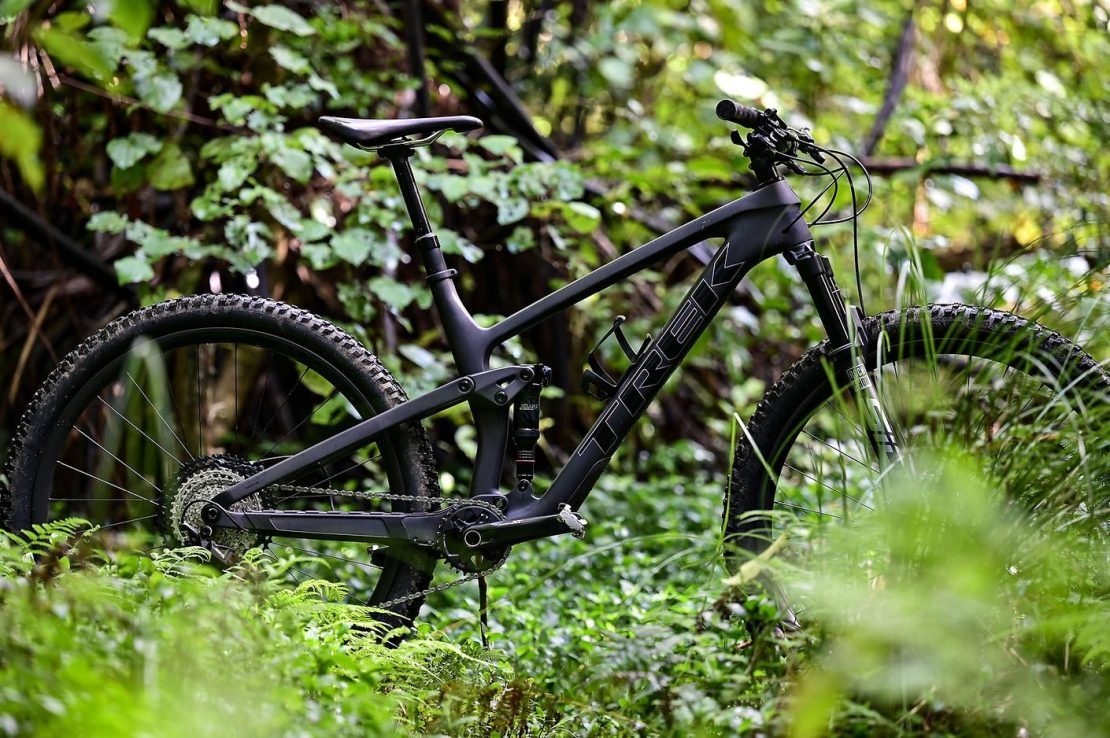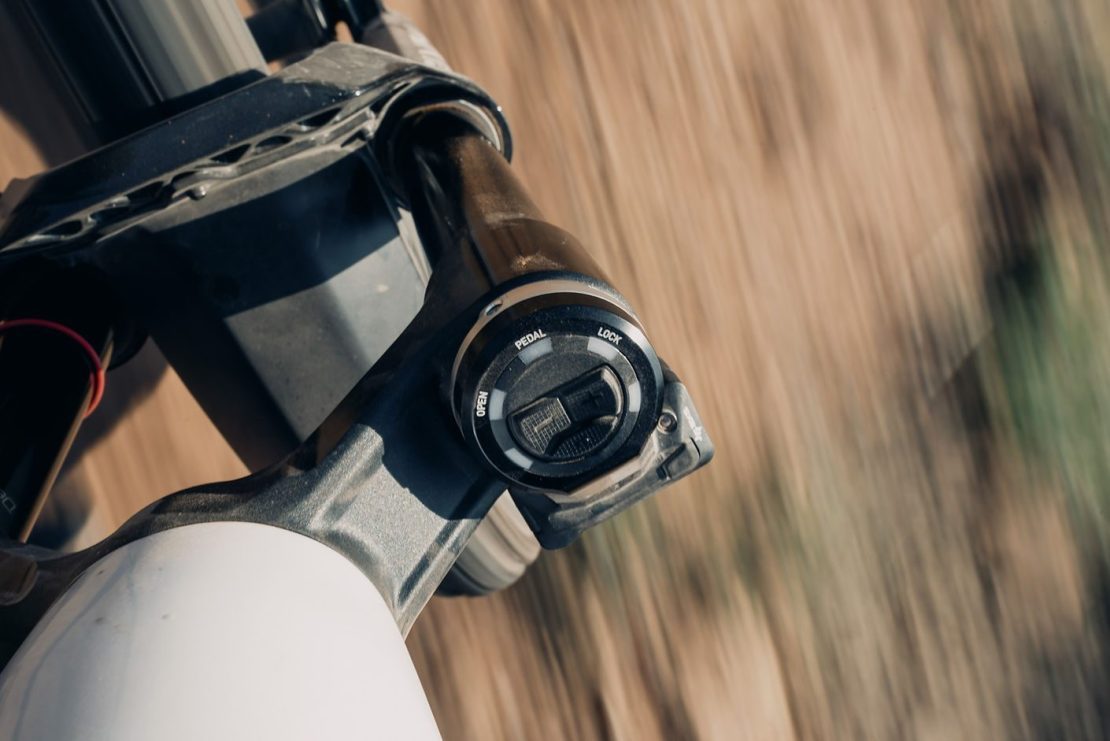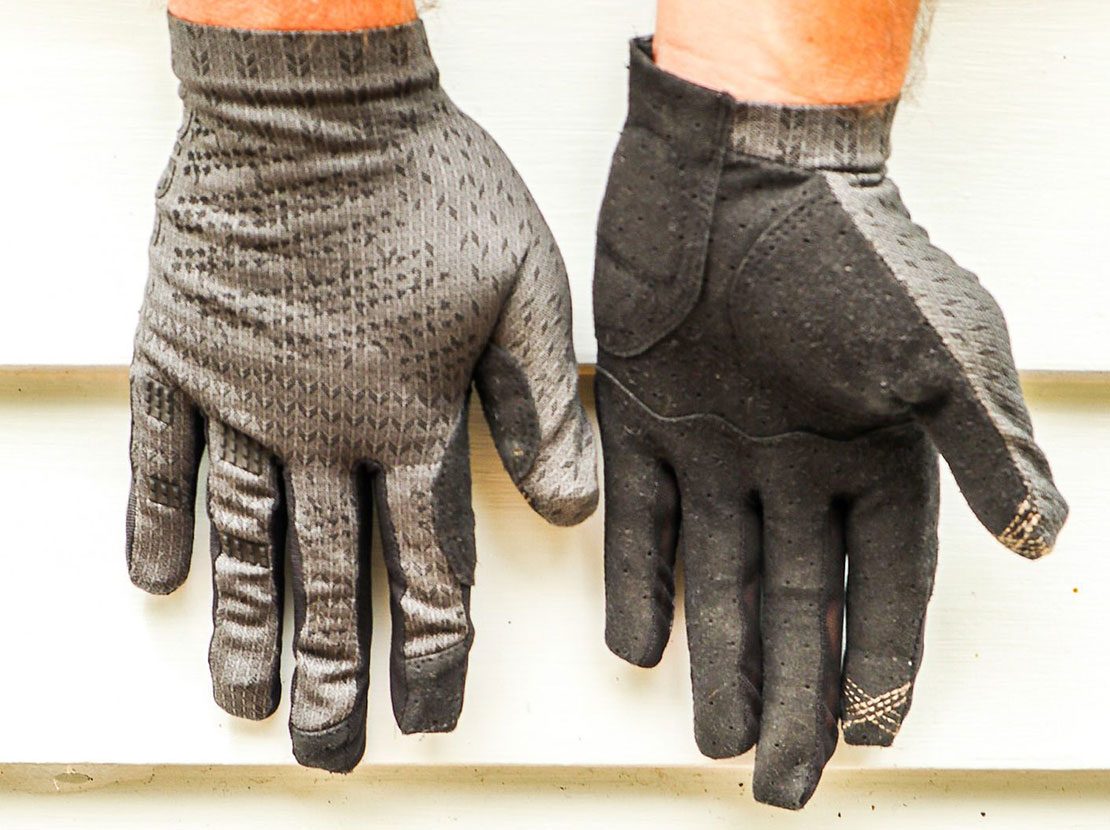Review: Exposure MaXx D MK13 Light
Nowadays, the term ‘built to last’ feels like a phrase from a bygone era. But there are still brands out there that want to ensure ‘built to last’ is a term we use well into the future. One of those brands is Exposure Lights. Each light is machined from aluminum and uses durable, high-quality materials for the lens. Each part of the build process is done in-house, in the UK, and all lights carry a two-year warranty. There’s not much in the bike world that’s manufactured in the UK or Europe these days, so that’s saying something!
I tested the Exposure MaXx D MK13 light which offers 2500 lumens when using the clever Reflex technology and some great battery life to boot. It’s a small package but it packs plenty of punch. The 2500 lumens in the MaXx D makes for a reliable night riding pal. It throws out plenty of light, is simple to use and features Reflex++ technology that optimises light brightness depending on your speed and actions on the bike. The lumens are increased to 4000 when Reflex ++ is used. To better manage battery life, the MaXx D has three Reflex Plus modes. The very clever Reflex mode changes the light’s output depending on the trail conditions, by using in-built 3D accelerometers to measure speed and bumps. If the light senses the trail is particularly rough, it boosts output to 4000 lumens and then dims it back down once it becomes smoother again. There are large cooling fins that draw away heat from the light, and a quick-release bracket with a sprung pin that holds it in place. The clamp can fit both 31.8mm and 35mm, thanks to the shim that’s included.



Overall, the Exposure MaXx D is powerful, robust, and well thought out, which is what has impressed me most about the brand. The performance is second-to-none and it lights up the trails incredibly well. If you’re doing some super gnarly trails, you may want to consider another helmet light but, for most riders, this light is very sufficient. The price is high, but the quality is outstanding. Personally, I’d rather buy the best one once than buy multiple lights, multiple times which in the end costs more money and causes frustration. This light throws out a ton of light, is tough and ‘built to last’.
RRP: $759
Distributed by FE Sports
Reviewed by Liam Friary
Film: Moving Mountains
The 56.2km (32.5 mile) Paparoa Track is Aotearoa New Zealand’s latest mixed-use backcountry ride. It joins the already extremely popular Heaphy Track and Old Ghost Road as prime bikepacking trip destinations. Its point-to-point route is what bikepacking dreams are made of: the perfect gradients, insane views, epically-located backcountry huts, and some of the most beautiful bush New Zealand has to offer. The track crosses the Paparoa Range, taking riders through alpine peaks, limestone karst landscapes, and thriving rainforests. While it can be ridden in a day, the route is dotted with three backcountry Department of Conservation (DOC) huts to encourage people to take in an overnight or multi-day experience. Each hut provides track users with bunk beds and mattresses, running water and gas cookers. Track users need to carry all their own food, sleeping bags and clothing—especially wet weather gear. The Paparoa range is situated on New Zealand’s West Coast where it rains 195 days a year on average, with 3,000 mm (118 inches) of rainfall annually.
Riders: Khulan Tumen and Viet Tieu
Producer: Caleb Smith
Film: Ross Mackay
Review: 100% Teratec Plus Knee Guard
Knees pads are a hard thing to get right. I’ve ridden with some great ones over the years… and some really, really bad ones that I thought would have been good. It’s hard to tell how good they’re going to be until you take a tumble. Personally, I feel naked if I don’t ride with knee pads on. My confidence just isn't there and I know that one bad crash could mean f$cked knees for the rest of my life (and knee surgery looks like a total ball ache). I’ve been close to this a couple of times.
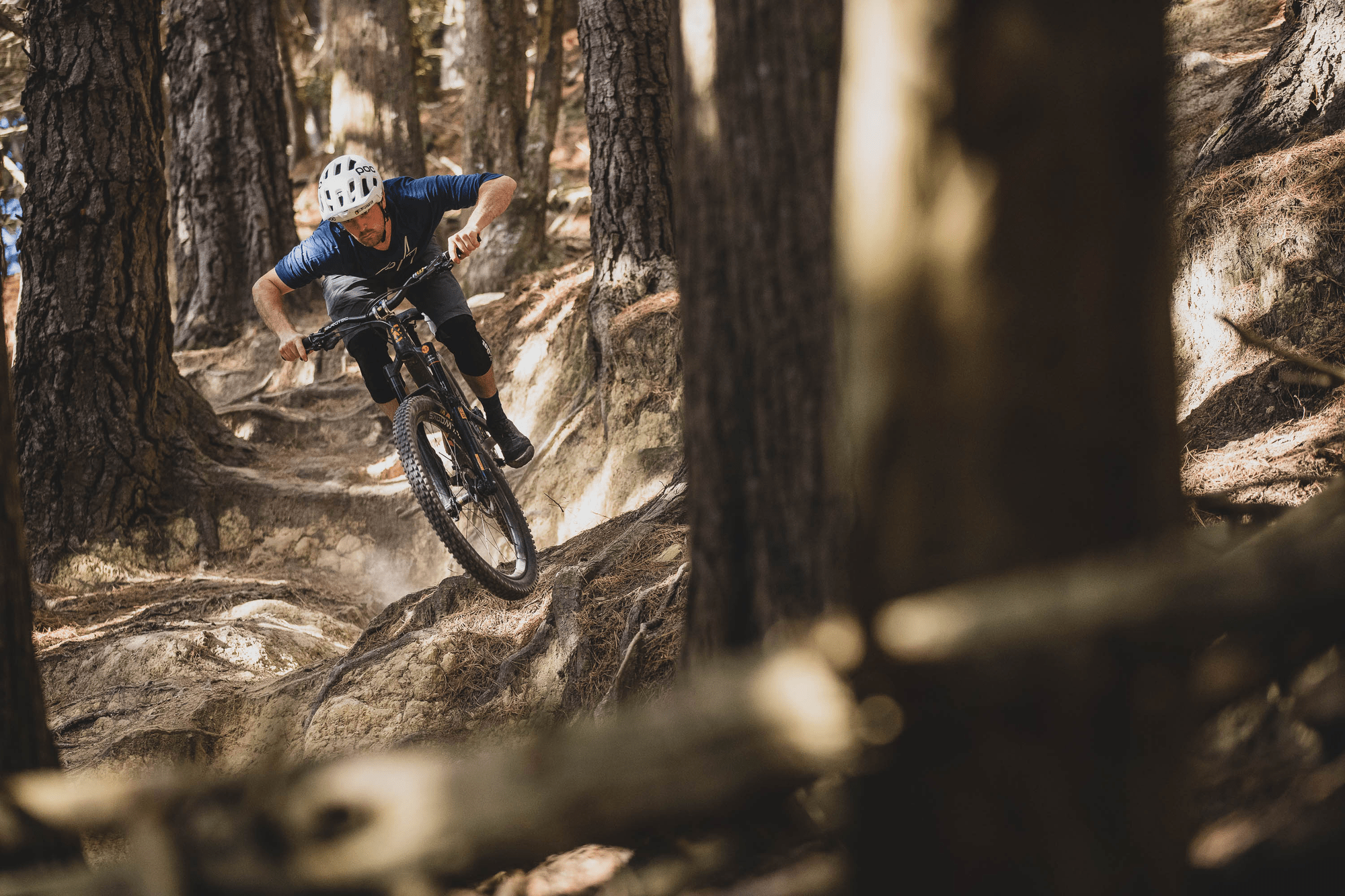
One of my biggest pet peeves is knee pads that slip down during a crash. There is nothing worse than buying a new set of knee pads you're stoked on, only for them to slip down your leg during a tumble, doing nothing to protect your knee. It's the worst. So, where does the 100% Teratec plus come in? Well, with a massive silicone webbing covering the inside cuffs on the top and bottom of the pad, these pads stay in place even after the biggest rags. The Teratec Plus work on a tight fit versus straps. This style of tight fitting pad can be hard to put on sometimes, but 100% have been smart and added a small hand pocket/handle for helping you pull the pads up. On top of the small pocket, and around the guard itself, is a thin layer of padding which just adds a little extra protection.
I’ve been using the Teratec Plus as my daily pads for the last few months. They have been on all sorts of adventures and rides, from big hike-a-bike days in the back country to quick loops of my local trails in all sorts of different weather: wet, dry, hot or cold. I went for the medium size as it's the size I normally choose when going for knee pads. Over the first couple of rides they felt a bit tight - the big silicone cuffs caused a bit of uncomfortable friction on my lower thighs. After a few rides, though, they stretched out slightly and the friction disappeared. This seems to be a common theme with compression-fit pads.
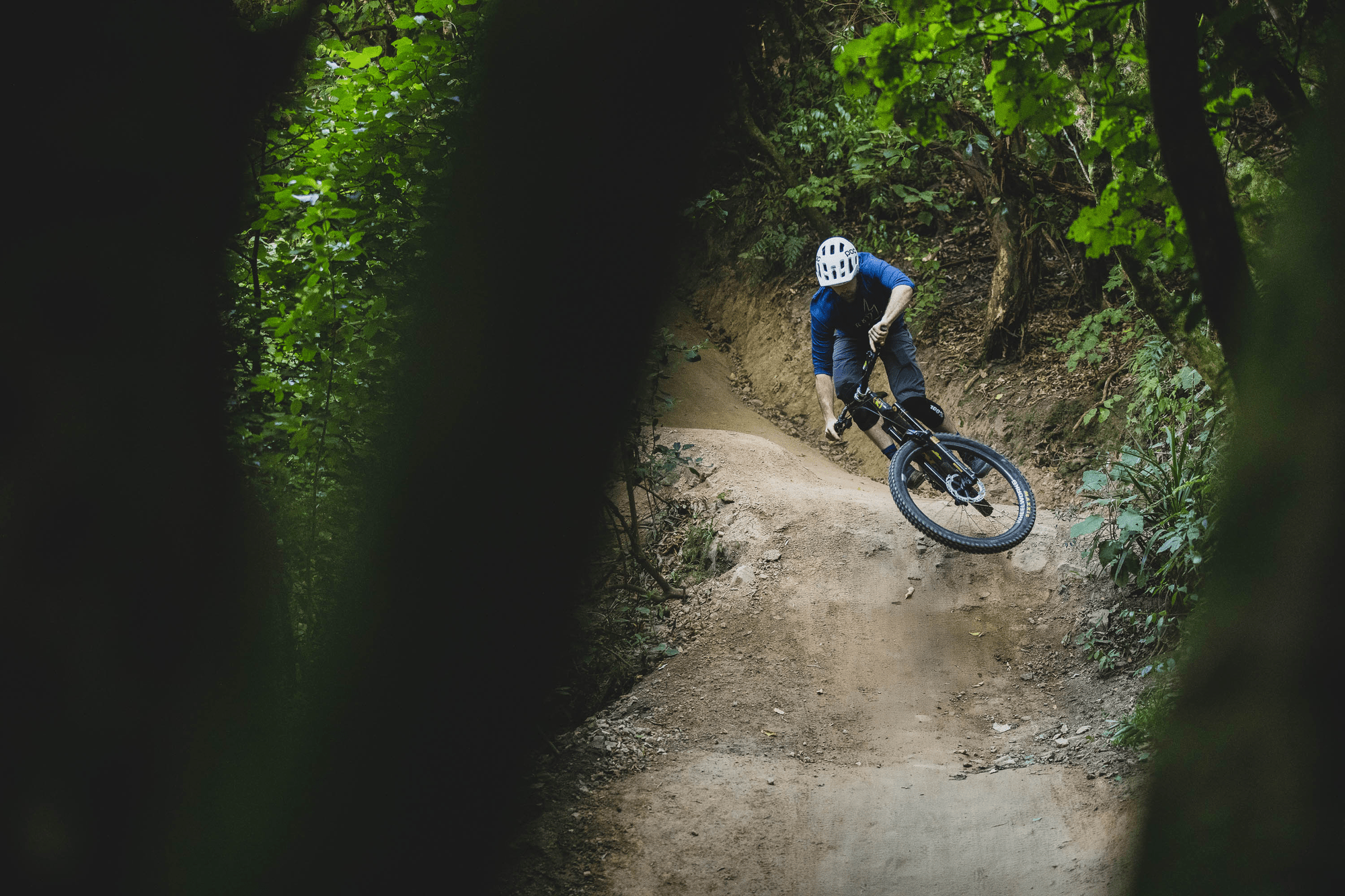
The Teratec Plus is aimed at the Enduro end of the spectrum, promising ‘Level 1 Protection’ in a pad you can pedal all day in. I can definitely say that both these claims are true - the protection level certainly lives up to the marketing hype. I've had some massive rags with these pads on and come out the other side with only a bruised ego. I'm a really big fan of the extra bits of pad they have added around the actual knee protector, as these help with awkward little bumps that can hurt a lot more that they should - funny bone knocks but in your knee. The ventilated mesh around the back of the pads do a good job of keeping you cool, but they still run a little hot in comparison to a lot of the lighter weight pads. You can kind of notice the knee pads when you first put them on, but after about half an hour of pedalling you forget you’re even wearing them. They are low enough profile that they easily fit under your shorts, and are long enough that you don't get the dreaded twat gap. They are a good length over all, covering the area you are most likely to hit in the event of a crash.
Over all, I would say 100% Teratec Plus Knee Guards are the best pads I've used in the last few years. Offering great protection, you can ride all day in them if you don't mind a slightly hot knee, with the main thing being that they don't slip down in the event of a crash. I would happily ride laps of the bike park with these on, then head off on a three hour pedal in full confidence that if I have a crash, my knees are probably going to be fine.
Distributor: FE Sports
Words: Liam Friary
Film: Vanzacs and the Zoo Boys
The Vanzacs is a small group of mates from Australia and New Zealand that wanted to take on the world and get away with it by the skin of their teeth. The Vanzacs and The Zoo Boys take an inside look at one of the most notorious crews in mountain biking and how they succeeded as professional riders and racers while never losing sight of the need to have fun along the way.
Story: Bosch's 'e' Evolution
Bosch’s ‘e’ Evolution
The visionary Robert Bosch always appreciated the advantages of the bicycle. From 1890 onwards, the Bosch company founder visited his customers in Stuttgart on a modern “low bicycle”, which was still little-known in Germany - penny-farthings were fashionable in continental Europe at the time. Robert Bosch relied on technology that he considered to be future-proof and forward-looking. In 1923, Bosch introduced to the market a dynamo light for bicycles - it comprised a generator and a headlamp, with over 20 million units produced into the 1960s.
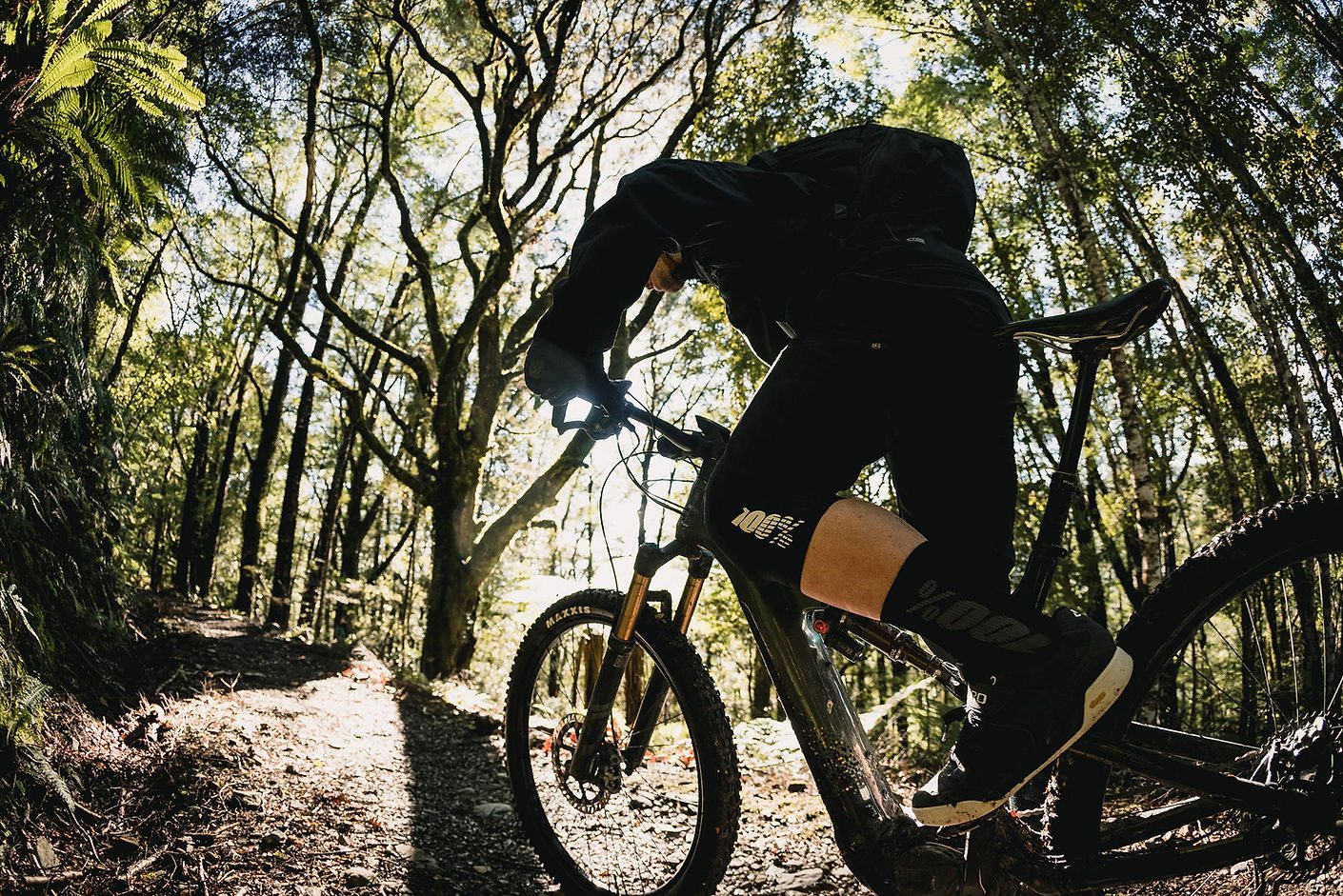
Fast forward to 2009, the bicycle once again became a focus for the Bosch Group, this time in electrified form. In the last few years we’ve played, reviewed and ridden more and more Bosch powered eMTBs. We thought it was about time we reflected on their history as we mark our historic 100th issue. A few weeks back I caught up with Dave Howard, Head of eBike APAC at Bosch, based in Taiwan. We’ve met in person before, but this time it was across digital means for obvious reasons. In fact, he was based in China but recently Bosch have moved offices to Taiwan to get closer to the brands and the assemblers.
Dave explained; “Back in 2009, it was just a handful of guys. First it was a hybrid with Mercedes Benz - it was a bit of a Frankenstein.” Bosch was, and has always been, around service first - following in the footsteps of their automotive division. “We never thought eBikes would have this much success.” In 2011/12, serious production began around the commuter space but Bosch had nothing in mind about eMTB. It strangely enough came from Taiwan, some of the cycle industry wanted to adapt it into MTB. As the industry always wants to push forward, a prototype concept was brought about. The tinkering began and the adaption of electric to MTB’s was made. However, it was still a prototype and a long way off from being available on the market.”

A few years later, in 2014, the Bosch bicycle team was around 150 people. The business expanded for the global market. Bosch has staunch stance on supporting growth of OEM’s (Original Equipment Manufacturer) especially in North America. Of course the rest of the world matters, but North America is strategically important moving forward. At that time there was only handful of brands in the eMTB game.
Dave says; “IBD’s (Independent Bicycle Dealers) are the gatekeeper to the market and some of the IBDs sold throttle-based bikes without service. At that time there was push back from IMBA. Talk was about how these bikes would destroy our sales with ‘normal’ bikes. So, we needed to develop a strategy around this. It was a challenging time, there was a real stigma around it being lazy.”
When asked about our market, Dave says: “NZ was a surprise for Bosch as they were fast adopters, actually the market demanded Bosch came into the market sooner rather than later.” Bosch had to make moves quickly to keep up with the demand. “[A speed of] 32km per hour was a key thing and the importers asked Bosch to come into market. In NZ there were no barriers except getting product into the market.” I ask whether it will slow down? “Growth projection for NZ is starting to slow a little, however they predict around 13% growth over the coming years.”
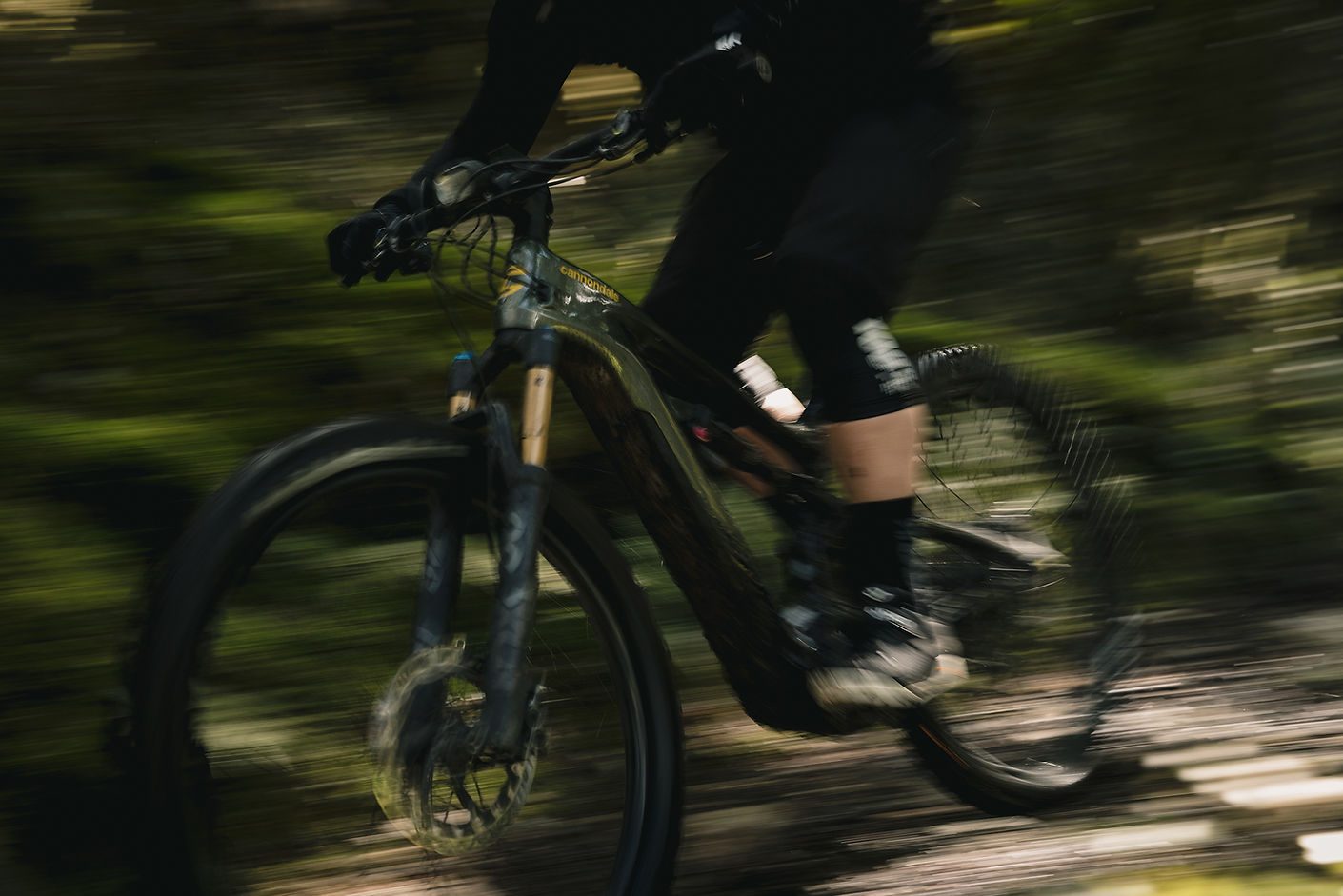
Over the years, Bosch has seen their eBike consumers change. The average user when they first launched was the Baby Boomer but, in more recent years, they’ve seen the age group drop down to the mid-thirties. It seems the trend is catching on. This is helped by their expanding portfolio of brands, rather than just being niche. Consumer perceptions are key and driven with top-end brands entering the category. In recent years, the smaller boutique/niche brands have adopted it, so in essence this makes it a more acceptable part of the mountain biking culture. Dave says, “it’s gone from niche to mainstream. There’s now an overpopulation of the category with a huge demand. It (eMTB growth) is supported by not only Bosch, but other brands that are driving the scene.”
Moving to the current decade, the eBike division at Bosch has expanded to around 500 people, and Bosch has around 70 brands using their product. Dave explains, “the aim is to have a team that’s small and agile.” Well, with a year most won’t forget, the adaptability of any business will be the key to future prosperity. I ask about what the future holds for eBikes? “Light eMTB will be the key; high-end bikes will remain but there’s a key to getting more people on bikes and involved with the sport. Design integration of battery and drive unit together. This is why we built a purpose-built drive unit so it could be a proper feel. There’ll be more innovating and refinements.” However, I want to know if they can extend the range of the batteries, as this catch up was just after our Old Ghost Road escapade (story in this issue), where we ran out of range. “There are limitations with batteries, if you increase the range then you need a bigger size and it’s a challenge with frame designs. If you want more range, then you need more space.” Back to the topic of the future. “Pre COVID 19 it (the future) was bright, and post it’s blinding, but we will need to step forward with caution. eMTB’s will continue grow, especially as the brands we all know and love have more offerings within the category. We aspire to have a more natural feel and for the bike not to feel like a powered bike. The future is a super clean handlebar set up. We will continue to promote trail building and development.”
Words: Liam Friary
Images: Cameron Mackenzie
Release: The all-new Santa Cruz Chameleon
The Chameleon is a blank canvas, ready to go in whatever direction your imagination takes it. Creativity in wheel size, gearing and component choice make it the perfect muse for freethinkers and freedom seekers alike.
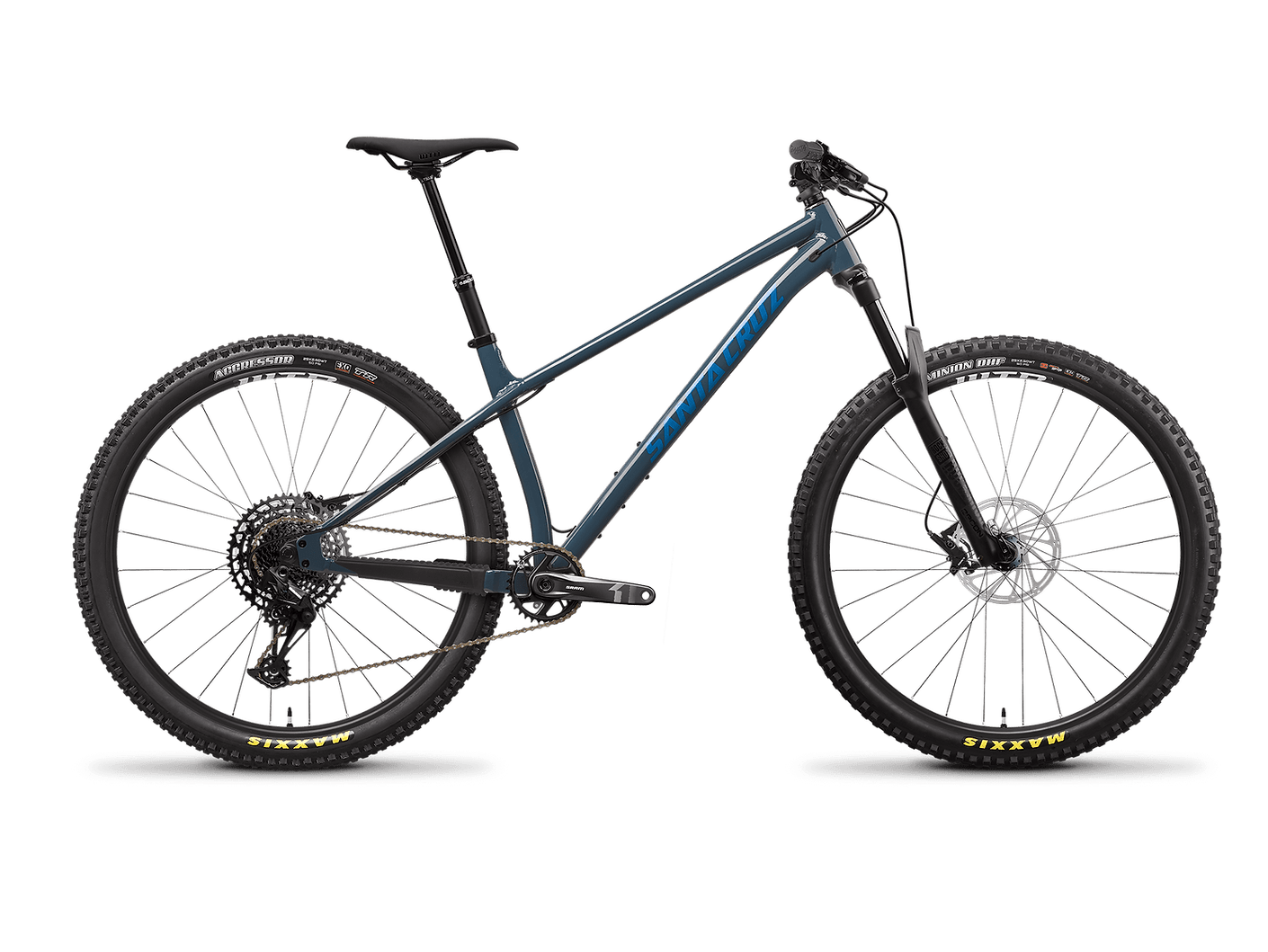
We made the Chameleon for riders who like to sculpt their ideal bike, and aren’t afraid to experiment. Whether 29er or mixed, geared or fixed, multiple major configuration transformations are made easy via the interchangeable dropouts. The low slung top tube and progressive geometry means this bike blends into whatever surroundings you place it. From raucous short-cuts across town to skipping the city altogether. It turns itself to trail exploration with the flip of an Allen key, thanks to the triple-bolt cargo cage mount under the downtube and standard bottle mount within the frame. Whatever the weather, however long the ride, wherever you're going, the Chameleon is so endlessly customizable and adjustable that the only constraint is really your own mind and motivation.
KEY FEATURES
-
MX and 29" wheels
-
130mm fork travel
-
Aluminum Frame
-
Additional 3-bolt bottle / cargo mount under downtube
-
Sizes S-XL
-
Lifetime Warranty
TECH INFO
-
Max tire width: 29 x 2.6-in or 27.5 x 2.8-in
-
Boost 148mm spacing
-
Post mount brakes w/ 180mm rotors
-
ISCG05 chain guide mounts
-
Threaded BB
-
SRAM UDH
-
IS headset
ALL NEW DROPOUT
-
Swap dropouts to change between MX and 29" wheels
-
425-437 mm chainstay length adjustment
-
Singlespeed compatible
-
Direct Post Mount Brake
-
UDH dropout compatible
We made the Chameleon for riders like these five who like to sculpt their ideal bike, and aren’t afraid to experiment. Read about the story of their unique Chameleon builds and their approach to riding. We encourage you to share their words and the photo galleries of their bikes.
Swanee Ravonison’s Patinated Aluminum Pariah
I make steel bicycles under the moniker Pariah and I convert old bicycles (from the 80s, 90s mainly) made up of new and used parts, to create mainly fixed or single speed gear machines. I do this in my bicycle shop slash grocery store, Fée du Vélo.
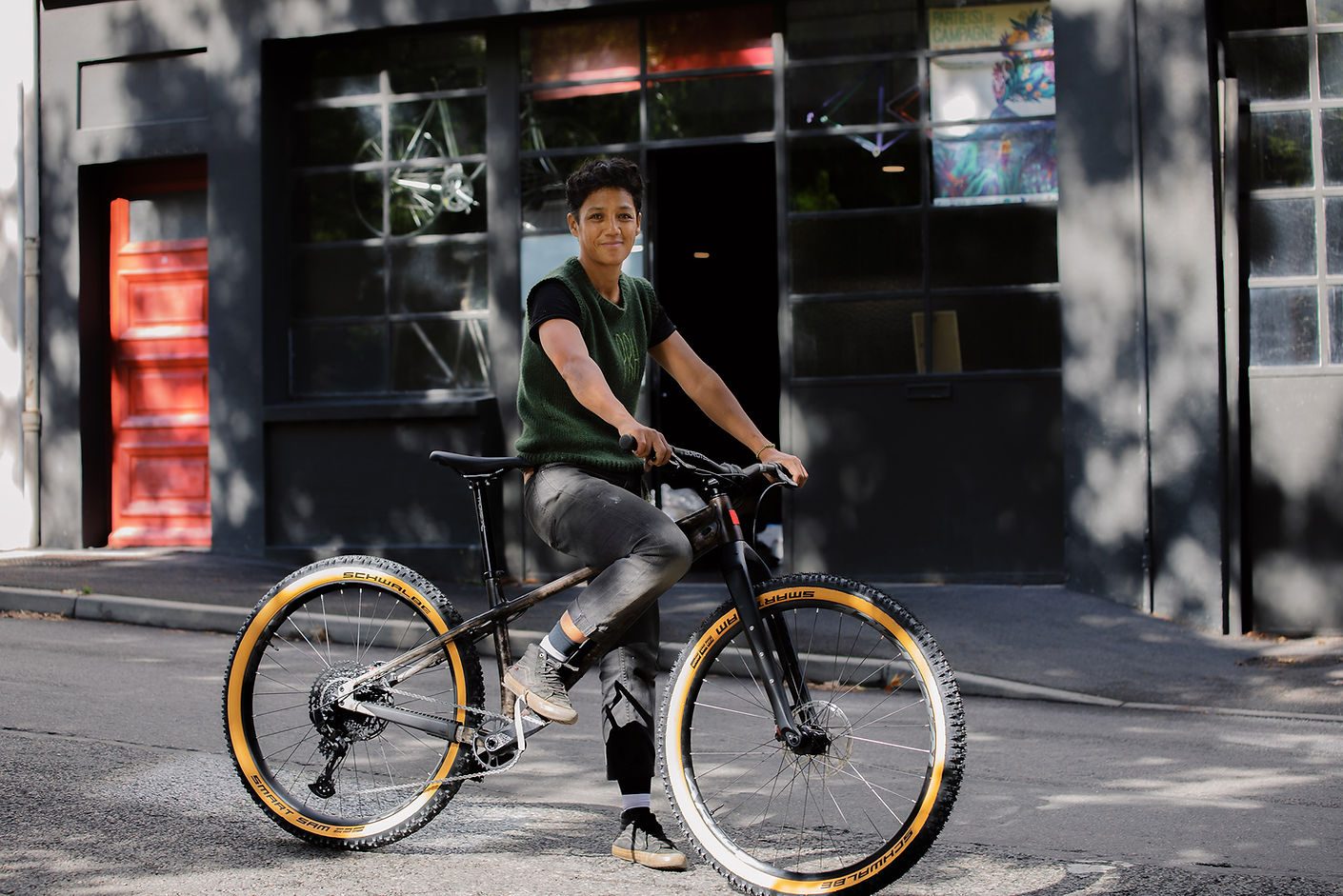
Looks wise I stripped ‘him’ of his flashy dress to make him more discreet, more subtle, more raw, sober, more radical like the Pariah bikes I build. The raw side is my hallmark. It means a bike ages and skates naturally. The traces of time which give any object a certain aesthetic and reinforce their sentimental value. But the more I work and think about natural patinas, the more the result reminds me of my brown body and my scarred skin. Imperfections, natural tattoos, indelible marks, memories of all my falls.
Using Hematite to age the frame is for me the opposite of a lacquer and varnish paint finish. The diluted stone is applied with a brush and the effect is not immediate. It can be stopped by water, and suddenly the result is revealed after drying. The warmer finish brings the frame to life and the tubes disappear. I like to linger to grasp the subtleties, to guess the hand of the craftsman. It’s impossible to get the same result twice. Sobriety never goes out of fashion and the details of the treatment are so subtle that it cannot be covered at a glance.
I kept big-volume tires for a cushioned feeling and installed a rigid carbon fork with mounting points to save some weight and carry bags for long bikepacking adventures. A lower bar helps for pedaling while keeping comfortable. I opted for cable disc brakes so that I could put the suspension fork and a wider cockpit back on without having to bleed. This is a solid enduro hardtail ready for rough and technical terrain.
As soon as the bike was ready I climbed a steep hill, jumped off the sidewalks and did a long sprint as a dancer.
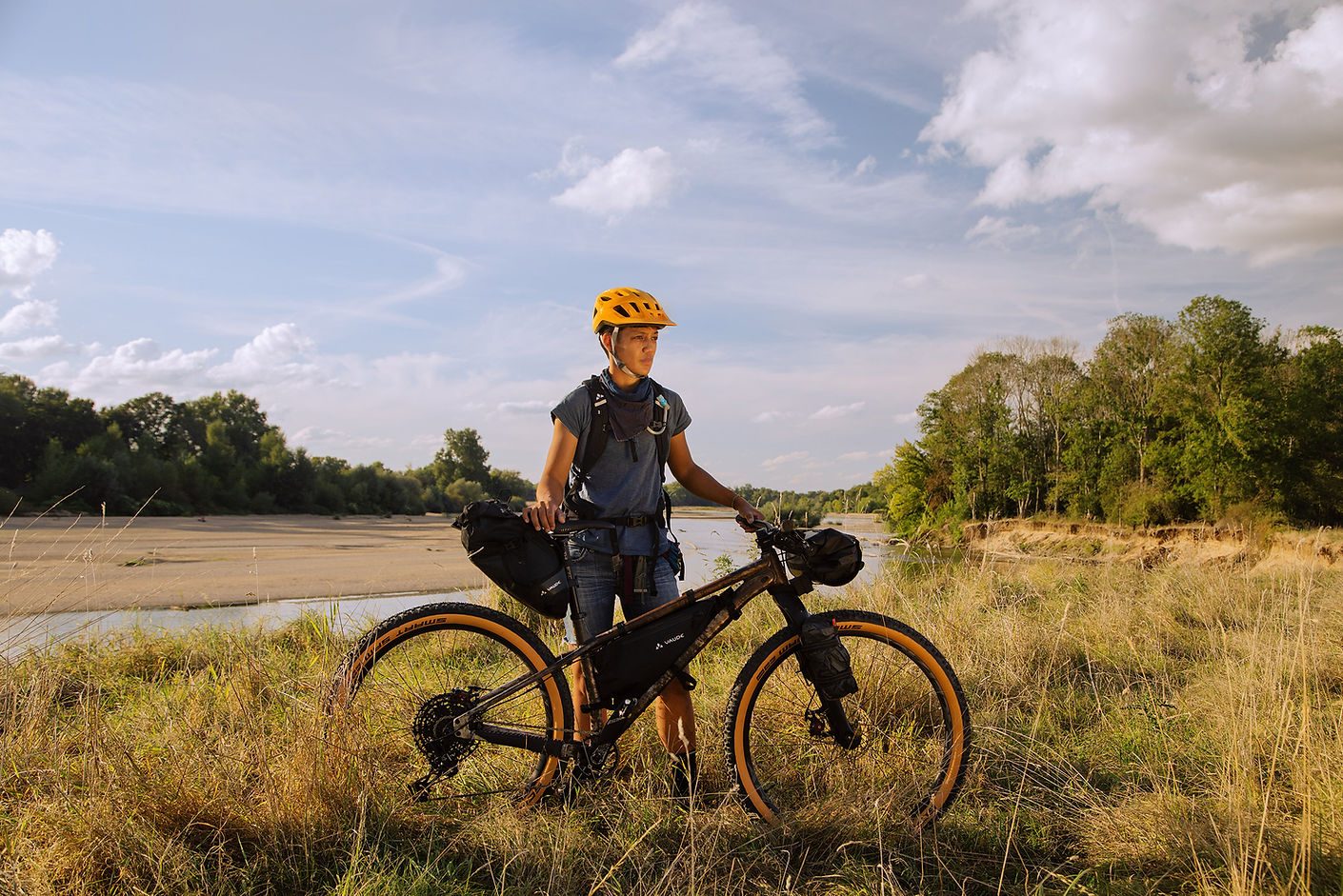
Soon I'll go further afield on it. The Morvan region is my favorite playground because it is accessible to me. First day out would be more cross-country, a loop around Saint Brisson. It would pass through the lakes of Saint Agnan and Settons, around a hundred kilometres. The second day, pure enduro, with technical climbs and descents, barely over 50km and still in Saint Brisson in the Breuil forest.
The destination matters of course, but what I always remember is the quality of the paths, especially if these are small technical and fun trails that require a little commitment. The difficulty of a climb and the adrenaline of a descent makes an outing unforgettable!
Sven Busse's Barmeleon
People call me Sven, or sometimes Steven. Maybe they just call me a little crazy.
For nine years I have had a bar called The GegenÜber in the middle of Bielefeld, right next to a large skatepark. My bar is a melting pot for a wide variety of characters, music, skateboarding, art, all that kind of thing. A look at the facade explains more than a thousand words and the interior of the shop is also characterized by DIY style and a certain punk rock attitude. I wanted to transfer the heart and soul of the GGÜ to the Chameleon from which it became the Barmeleon. The paint was done by the graffiti artist who designed the bar [@ProPhret]
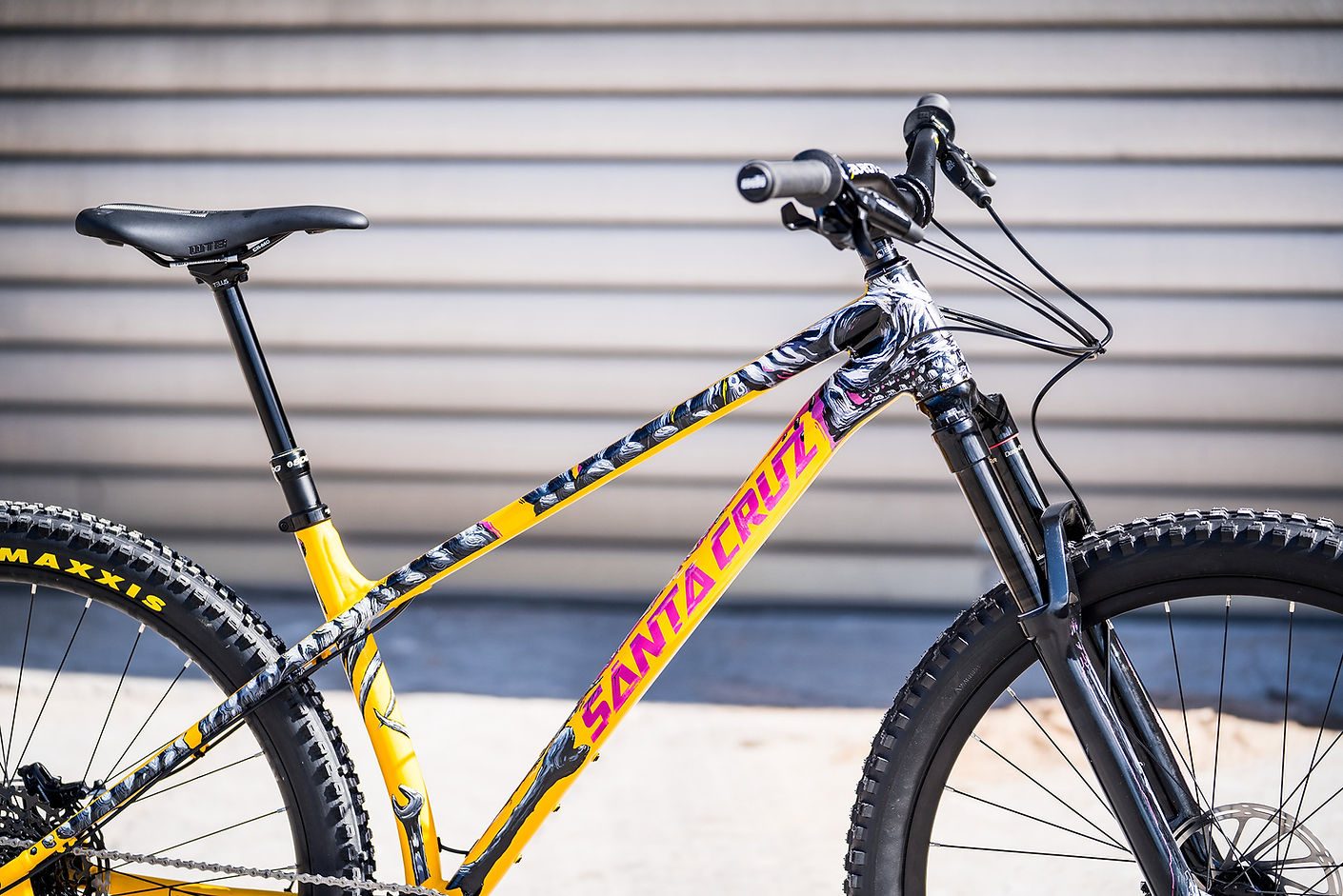
When I started thinking about this bike the first thing in my mind was the song by Orange Goblin – Monkey Panic
“Now it's time for you to run,
Got the fear, so get your gun,
Drink your whiskey, drink your wine,
Take your pills and come inside,
Chaos falling all around,
Monkey tearing up the town,
People running for their lives,
Armageddon's here tonight.”
Basically my biography has been completely interwoven with cycling since I saw the Hoffman Bikes video "Until monkeys fly" on VHS tape at a friend's house in 1998, and especially the street part of Mike Escamilla. I would describe myself as highly addicted to biking. I associate so many great people, friends, trips, spots, injuries and constant progression with cycling. Then, at some point, actually inspired by my younger brother, who is a huge inspiration to me, I got into mountain biking and discovered my love for it. It’s a substitute for BMX riding.
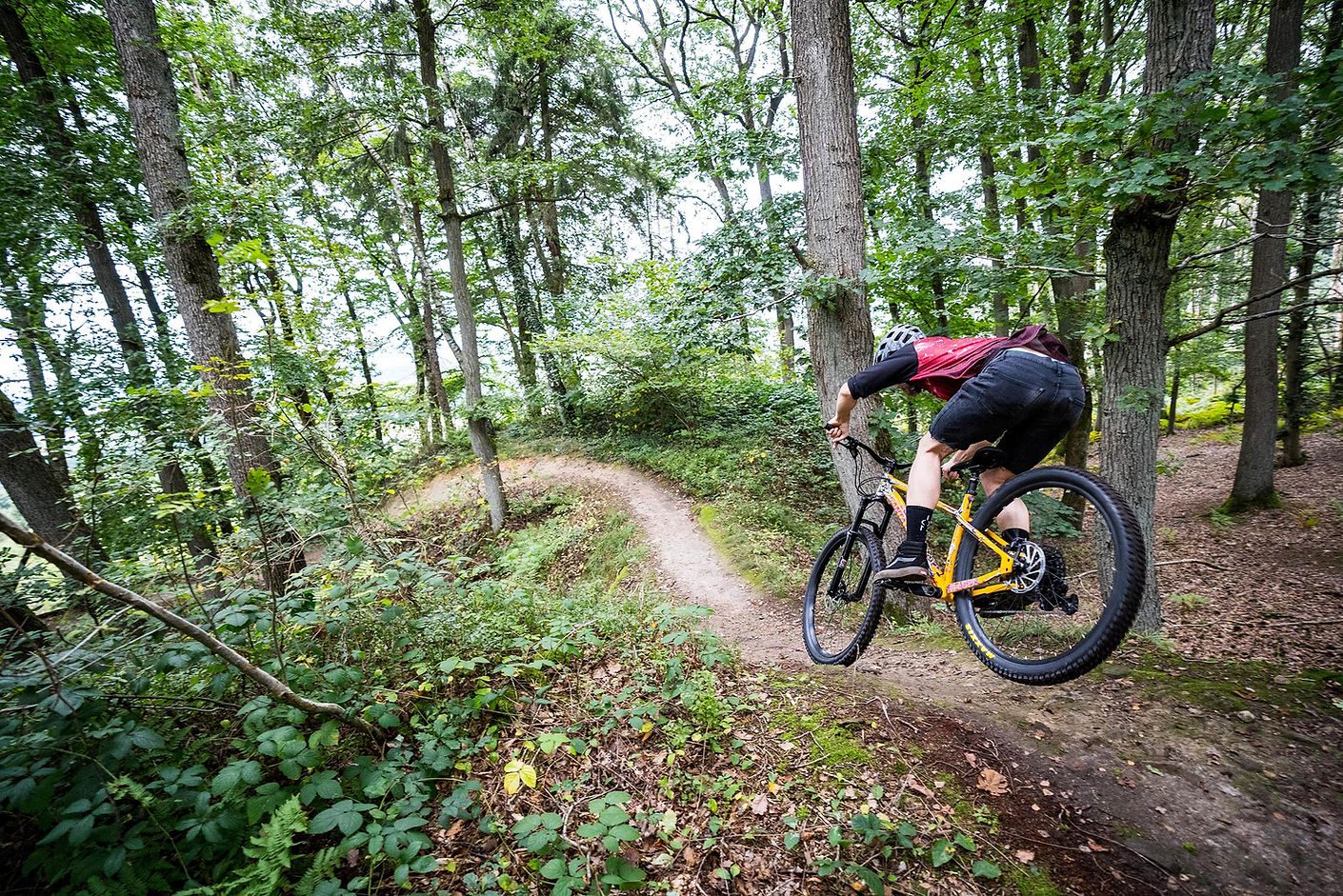
Since I saw the video with Craig Evans (The Steel City’s chameleon), I've been a fan of his shredding style, but also of the bike. I actually dreamed of basically flowing all of my trails with this kind of bike and sure in myself that it must feel damn good. Both to flow my home trails, manual through the city and to send jumps.
Myia Antone’s Medicine Finder
My bike has taken me to places that previously I’d only visited in dreams. Places where our stories come from and where medicine was harvested by my ancestors. My mountain biking journey started during the peak of the COVID19 pandemic, which meant I was riding alone – a lot. However, I knew I was never really alone. I was constantly surrounded by the trees and plants that sustained my community for thousands of years. In many ways, my bike allows me to time travel to quiet moments where I can be with my ancestors.
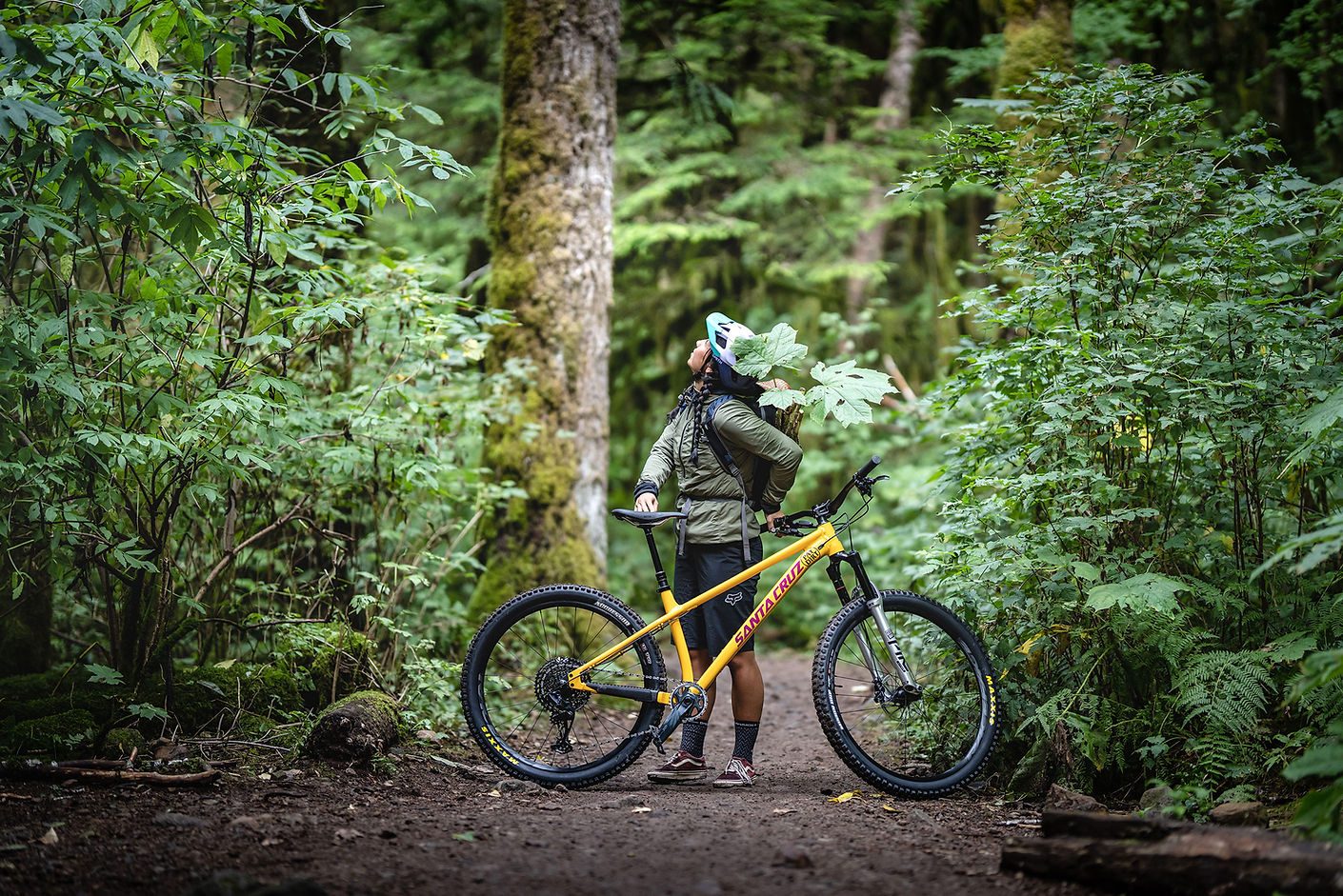
It’s hard for me to separate mountain biking from plant harvesting, I find so many similarities between the two. Biking teaches me how far my legs really can take me, how to get back up after a fall, and that everyone looks better with a little bit of dirt on them. Plants teach me that we can all grow and thrive in different environments, you can’t judge someone or something based off of one season and you grow stronger the deeper your roots. If anything, the two seem pretty interchangeable.
My understanding of our relationship to land is that it is an extension of ourselves. We love and respect the land as our kin, and understand that the world will teach you everything if you look long enough. I was taught the forest was our pharmacy - when we were sick, that is where we would go for our medicine. Today, I think of mountain biking as medicine in the forest too. The ups and downs bring healing to every inch of my body, and I always come home with a smile as big as can be.
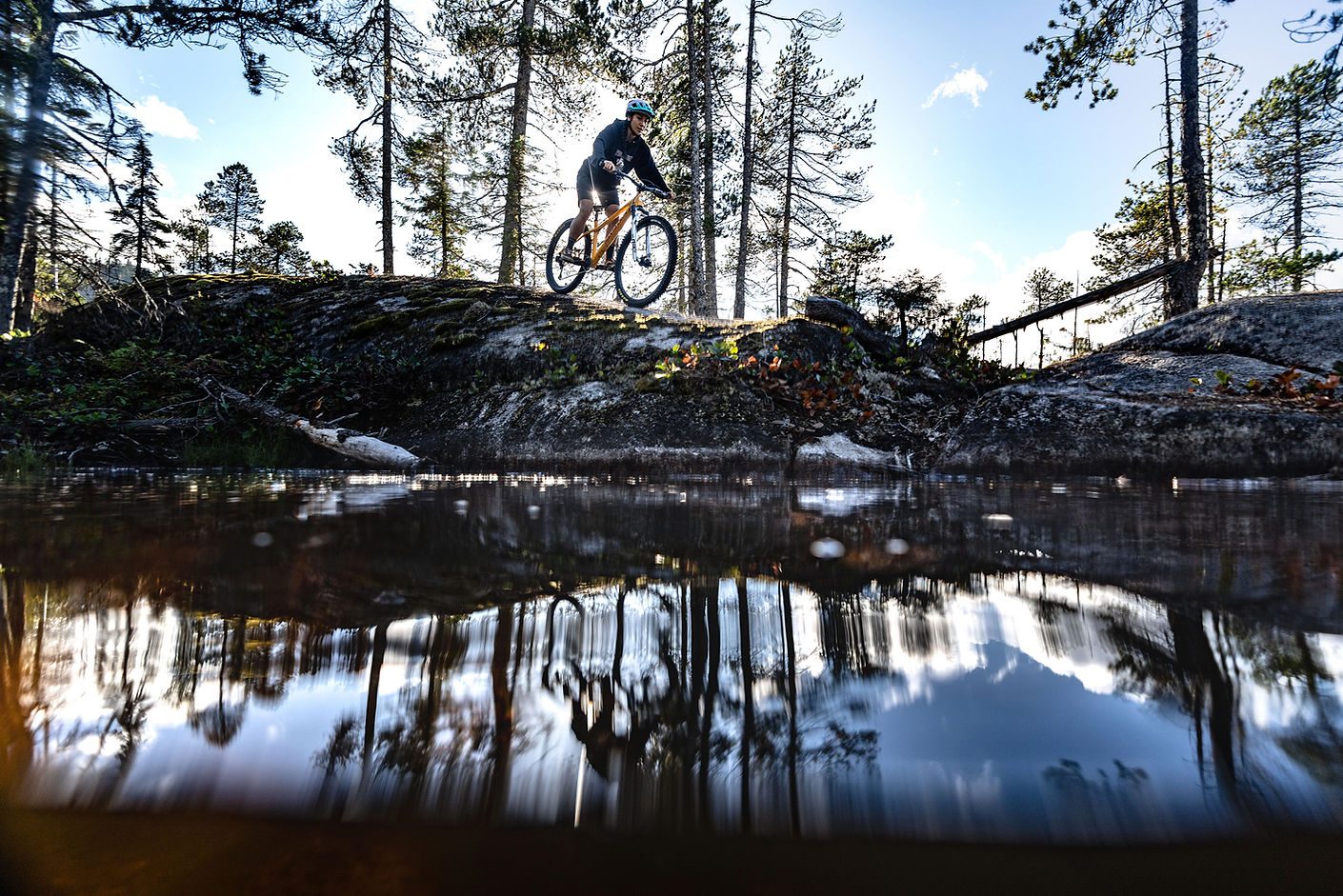
Today, I am finding new ways to do old things. My ancestors have been harvesting from these lands and waters since time out of mind. I follow in their footsteps, but sometimes my feet just happen to be on pedals. My bike brings me to hidden patches of wild strawberries and devil’s club galore. I bring my backpack for snacks, bike tools and space to fill with plants to take home. How did I get so lucky to have a beautiful territory that is also world famous for its bike trails? I am rich in love and beauty from my time spent on the land. However, wealth also means having enough to give away. How do I embody the teaching of reciprocity within mountain biking? How do we give back to a sport that gives us so much?
Today, Indigenous Women Outdoors is how I give back to my communities. We offer programming for Indigenous women and non-binary folks to come out together on the land, partake in mentorships and try new outdoor activities. We have so much to share with the outdoor community, and it is finally time to listen.
Eric Ackermann’s Pink Space Goblin loc
My friends call me Baby Legs Eric.
I work in the warranty department of the SCB Factory and have been with the company for over 11 years. If you’ve ever requested something from our factory it was probably me that fulfilled it. You’re welcome.
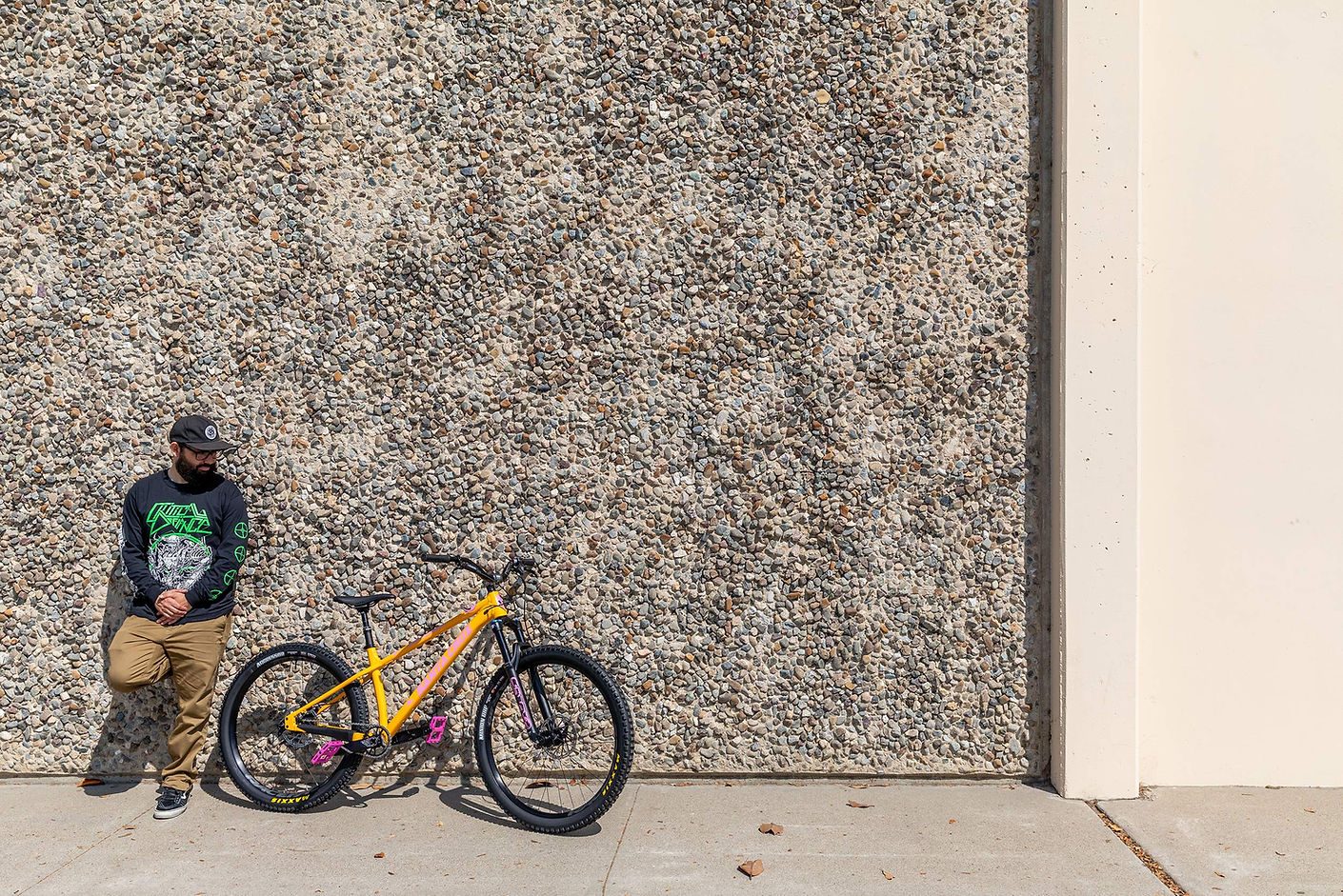
The only thing that interests me is the absurd and keeping life as simple as possible.
I have two important tenets that I base my life around: 1. Don’t be a picky eater and 2. Never miss an opportunity to keep your mouth shut.
I wanted to get down to basics and turn it into a single speed bike to bomb around town. I was really into the color of the frame and thought pink would be the loudest contrast. It makes the bike look like it just came out of a comic book. I spend a lot of my free time illustrating and have gotten really into digital art so I knew I had to create some custom decals to slap all over it. Being able to cover one of my favorite bikes in artwork I drew was definitely my favorite thing.
I ride this bike all over Salinas, crushing burritos and Jarrito soda waters. I plan on building one just like it for my wife so we can take our dogs on adventures.

Paint: I kept the original yellow since I love it so much.
Frame size: Medium
Frame mods: Left as is since I didn’t want to mess up the natural build of the bike.
Fork: Yup, it’s got one.
Amount of airs in the bouncy bit at the front? A whole bunch
Number of gears: NONE
Which side do you have the rear brake on? Right side.
Wheel size(s): 29 in front 27.5 in rear
Tire pressure: A whole bunch
Tire type: Somewhere between hella chunky and smooth as smooth peanut butter
Mike Hill’s Tool Carrying Tool
My friends call me Mike. I build BMX frames for my company called Deathpack BMX.
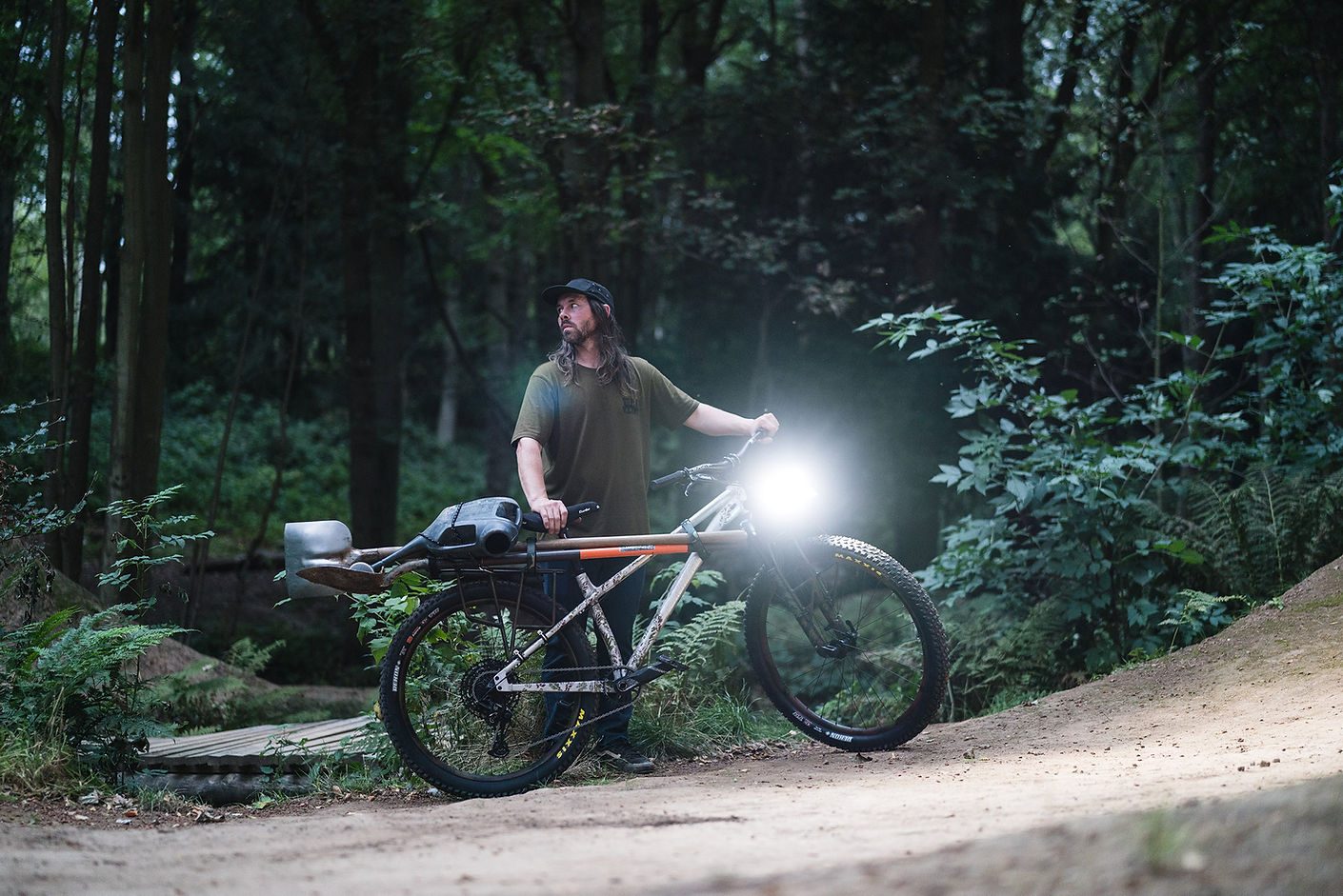
I owe my passion for bikes to my dad. He had me surrounded by bikes for as long as I can remember and riding as soon as possible. I can't imagine life without bikes, be it pedal powered or motorised, there's nothing like it.
This is an off-road workhorse to carry tools to the trails through the winter from my van down a two mile single track to the bottom of a wood where the jumps are. It's like a swamper truck or winter hack. This bike is a tool. I go knock about on it, push iron, move dirt.
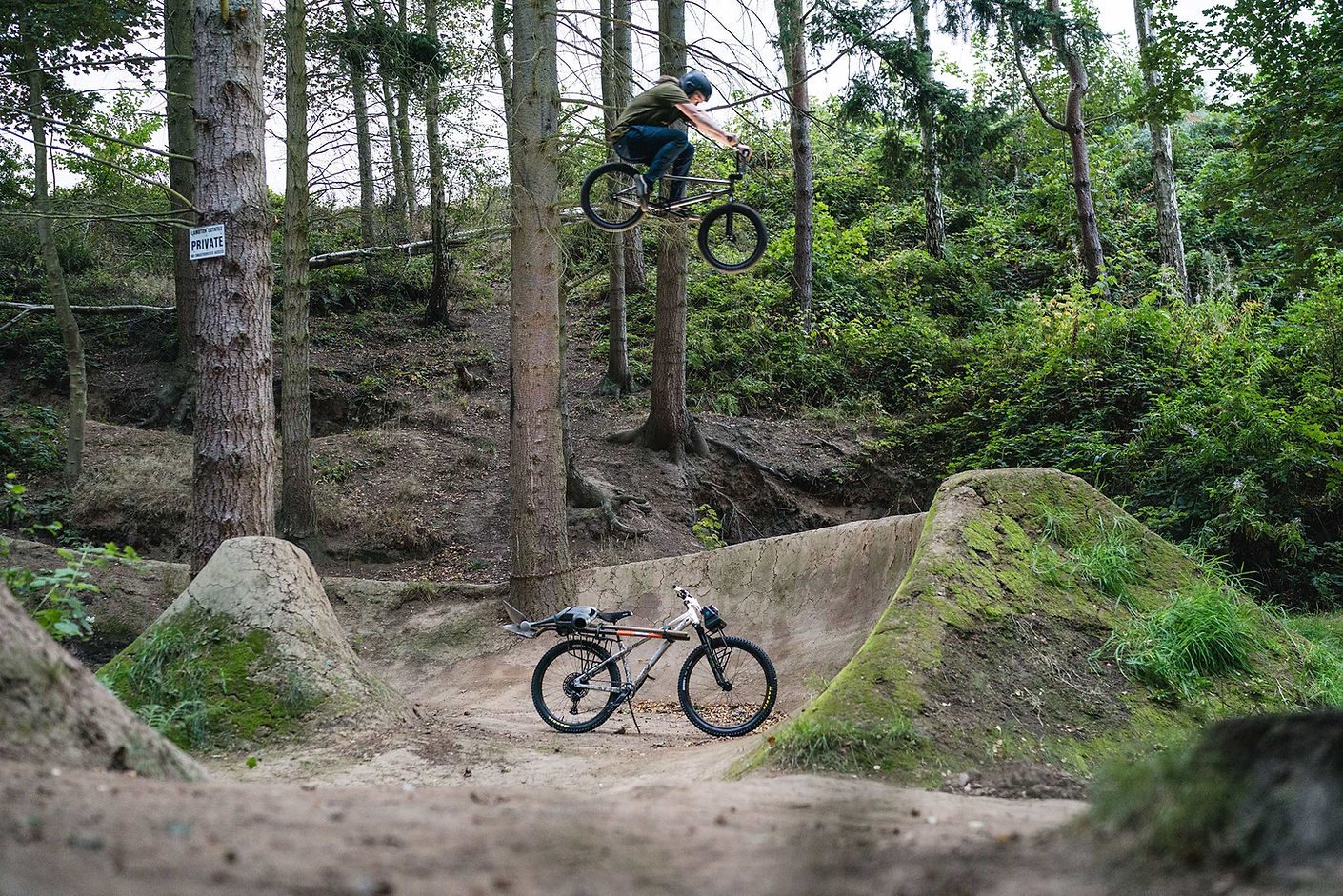
Paint: none
Frame size: medium
Frame mods: brackets and racks to carry panniers luggage and tools, etched frame logos and patina raw finish
Amount of airs in the bouncy bit at the front? Maximum
Number of gears: All of them.
Brakes, yes or no? Yes but maybe just back
Which side do you have the rear brake on? Right
Wheel size(s): 29 front, 27.5 rear. It’s a skullet
Tire pressure: 50psi
Tire type: Fat as possible and somewhere in between knobby and dirt tiller
Video: Brandon Semenuk's 2021 Rampage Bike Build
Brandon Semenuk's 2021 Red Bull Rampage build is the bike you'd expect a five-time Joyride and three-time Rampage champion to ride. With big travel, and big trick potential, his custom 27.5 / 26 mulleted Trek Session is set up with a one-of-a-kind BlackBox AXS drivetrain, and a 190mm single crown RockShox Zeb Ultimate. Master mechanic, Sean Murphy, of Fluid Function in Squamish, B.C. assembled one of his two builds that he'll be travelling to Red Bull Rampage with, as he seeks an unprecedented fourth title.
First Impressions: 2022 Trek Top Fuel
Trek has just released the latest version of their popular Top Fuel bike, I’ve had it for a month already so these are our first impressions. Look out for the full review in the upcoming issues. With the release of the Supercaliber taking the place of the full-noise XC race bike, the Top Fuel had the opportunity to evolve out of that same XC space, and that’s exactly what it has done, moving firmly into the ‘trail’, or, - dare we say it - ‘downcountry’ segment.
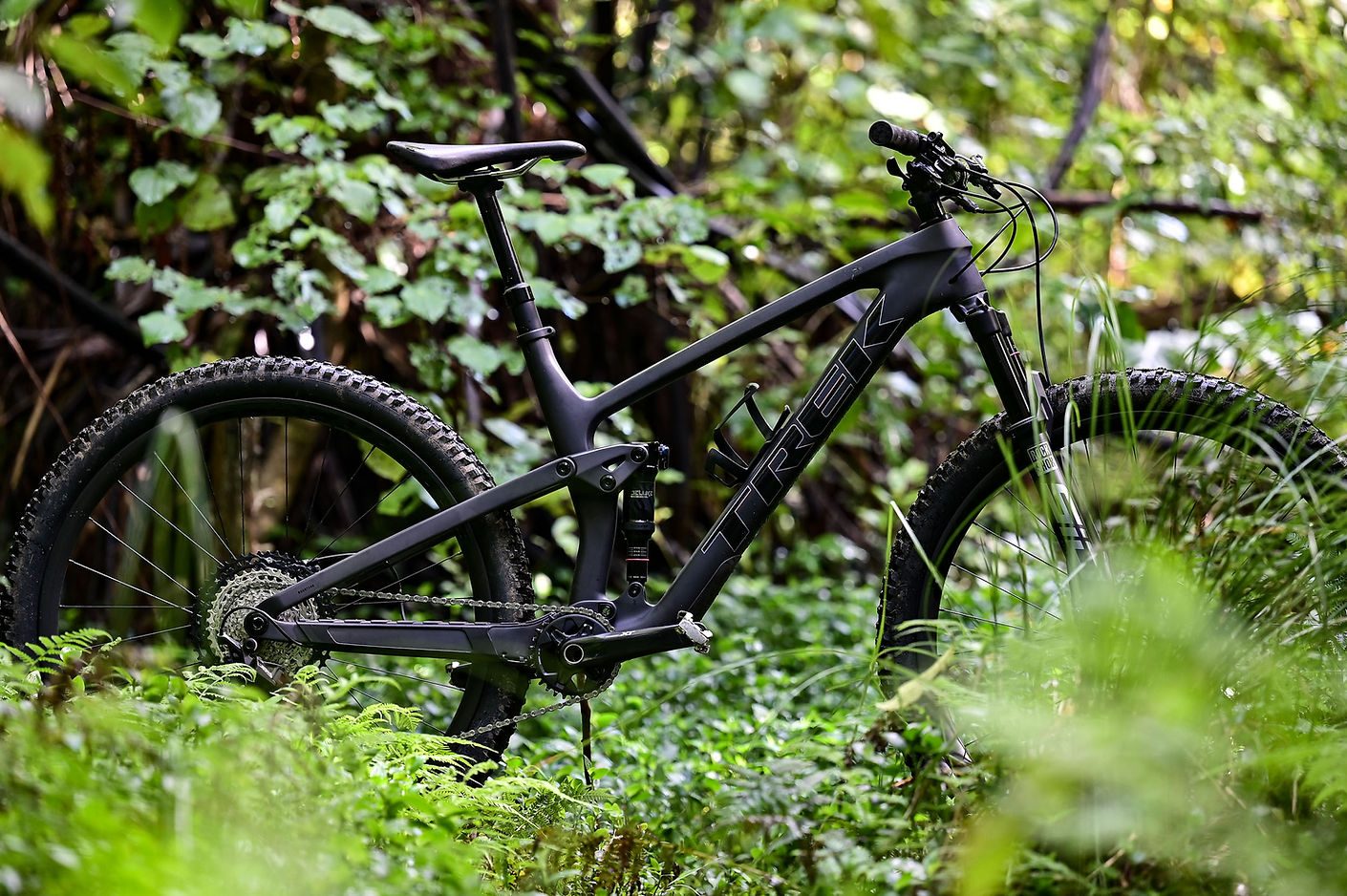
For 2022 travel in the rear ups from 115mm to 120mm, and is matched by a 120mm fork. The model I have had on review is the 9.8, which means you get the full carbon frame along with Bontrager carbon wheels, and a full XT build kit from tip to tail. Out of the box, I personally liked the matte carbon look with holographic details around the edge of the logos, it’s subtle, smart and stealthy. But if you’re bolder than I am, it’s also available in a pretty striking Red/Purple/Yellow fade too. All the housing is internal, which completes the sleek look, and also internal is your tool kit! Or it can be if you want it to be with a handy tool storage compartment integrated under the bottle cage, sadly you have to provide your own tools, but it does come with a nice little pouch to wrap things in. I’m looking forward to seeing just how much stuff I can jam in there, it looks like an ideal shape for a long cream doughnut. At the bottom of the down tube, there is a plastic armouring to protect the carbon, and a chunky rubberised chainstay protector to keep things quiet. Interestingly for an XC-oriented bike, there is only one bottle cage mount, which seems strange as this kind of ride would seem to be perfect for longer stage or marathon racing. Our 9.8 model has the full XT mentioned kit, which includes the superb 4-pot XT calipers and a 10-51 tooth cassette.
With 120mm travel, 66.0-degree head angle, and 2.4” tyres, the Top Fuel is set, on paper at least, to be a pretty fun whip. The term ‘Top Fuel’ is a term associated with American drag racing, which is all about acceleration, and that is immediately noticeable, the Top Fuel draws on its XC roots and gets up to speed fast, but with modern geometry and tyres that give the confidence to push through the corners - it can stay there, where with a more traditional XC bike might ask you be tempted to pull back.
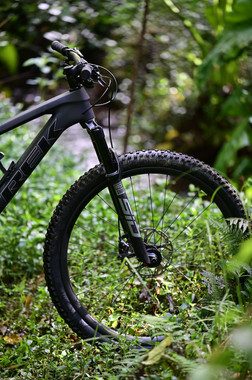
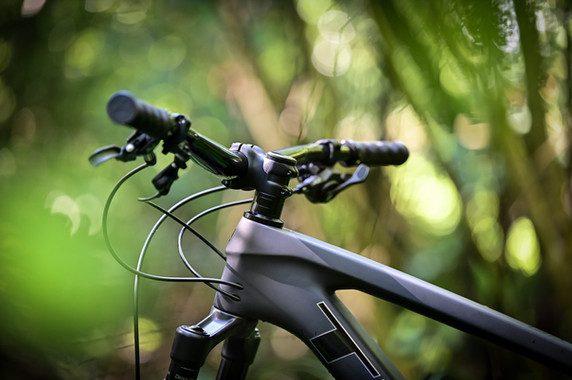
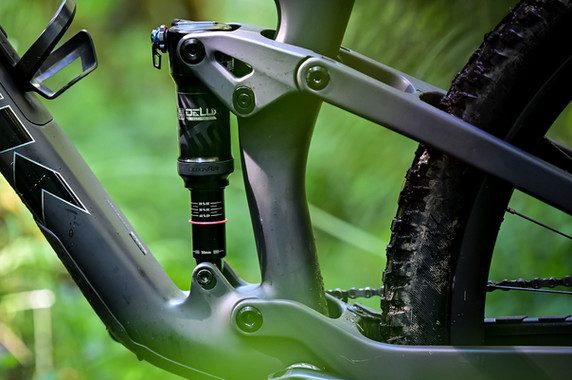
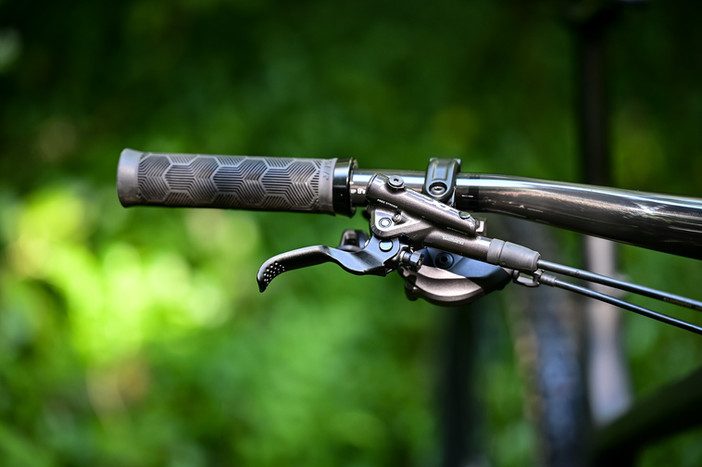
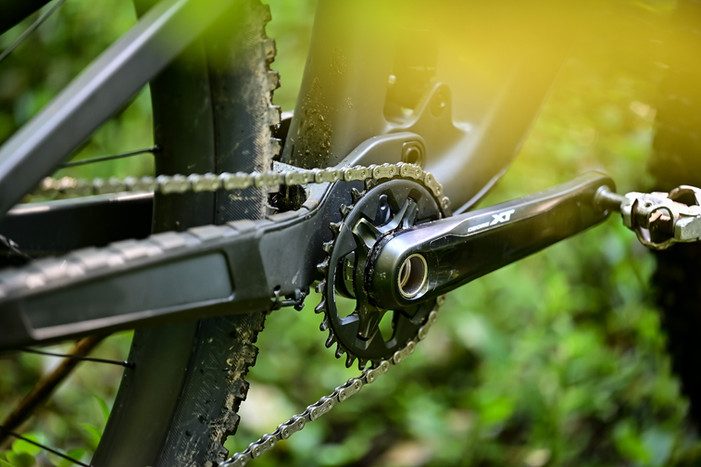


After a month of riding on the Top Fuel, I left thinking, ‘this is the kind of bike a lot of people should be riding’. My totally un-scientific belief is that thanks to effective marketing companies, more riders are riding longer-travelling, heavier, squishier (yes it’s a technical term), bikes than the terrain really requires. Part of that has been the evolution of geometry. It has only been longer travel bikes that have had the matching geometry that inspires confidence at speed, or over steep terrain. But with more modern geometry (read: longer, slacker) trickling into bikes like the Top Fuel, you have the choice of riding lighter, shorter travel bikes, with more confidence over technical terrain. What’s more, tyre choice can often be one of the most significant choices in what terrain a bike will excel on and with Trek speccing the new 2.4” XR4 tyres, they clearly had this same thinking in mind. They are noticeably chunkier tyres than you might think to find on a 120mm travel bike, and probably reflect the kind of personal changes most riders end up making to their bikes in time.
Anyway, all this theory aside, spending this month on the Top Fuel only confirmed my thinking - I felt I was undeniably faster over 90% of the terrain that I usually ride than I was on a longer travel bike. This was confirmed when finishing one descent, and waiting at the bottom for my regular riding partner to catch up, his immediate comment when he eventually arrived was “You were RAPID down there today!” The light wheels (and overall lightweight, 27.80 lbs / 12.61 kg) and fast engaging 108t freehub means it gets up and going very quickly.
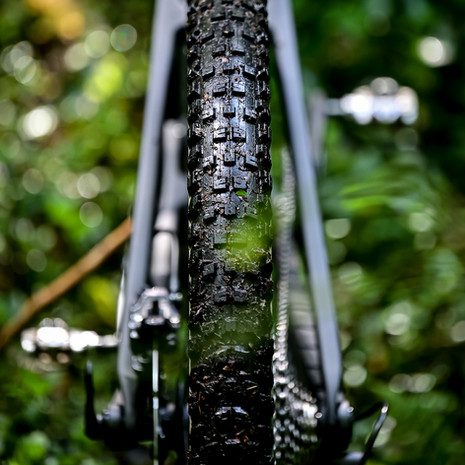
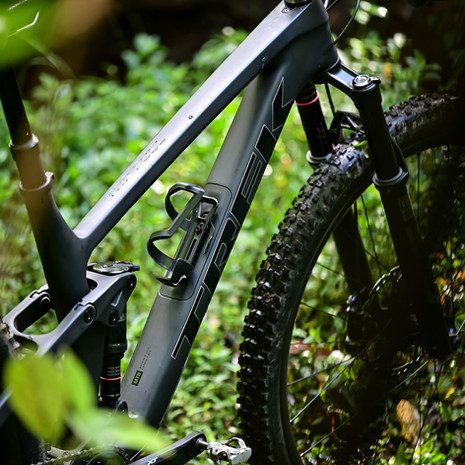
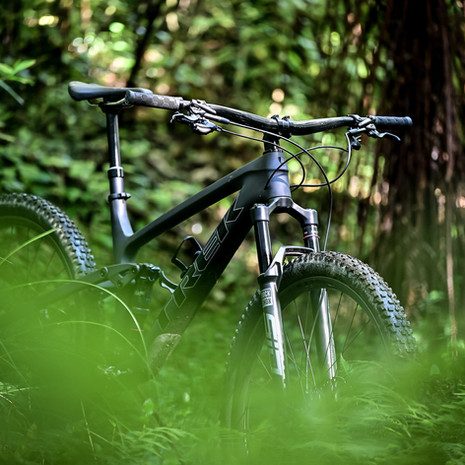
On the suspension front, the SID Select+ does the job nicely, but I’m looking forward to spending some time fine-tuning this. I’m thinking that it might benefit from the addition of a bottom-less token. The frame is rated for a 130mm fork as well, so if you really wanted to take a step towards the down part of the down-country putting something like a Pike on here would really make it rip.

So far I have been really enjoying this bike, and I am really hoping the time I have it for isn’t going to be hampered by another lockdown because it really makes me want to get out and go for a good long ride each time I look at it. Look out for the full review coming soon.
Words & Images: Lance Pilbrow
Release: RockShox Flight Attendant
Flight Attendant removes suspension complexity to elevate your ride experience. Our relentless pursuit of simplicity is driven by one goal: to unlock your full riding potential.
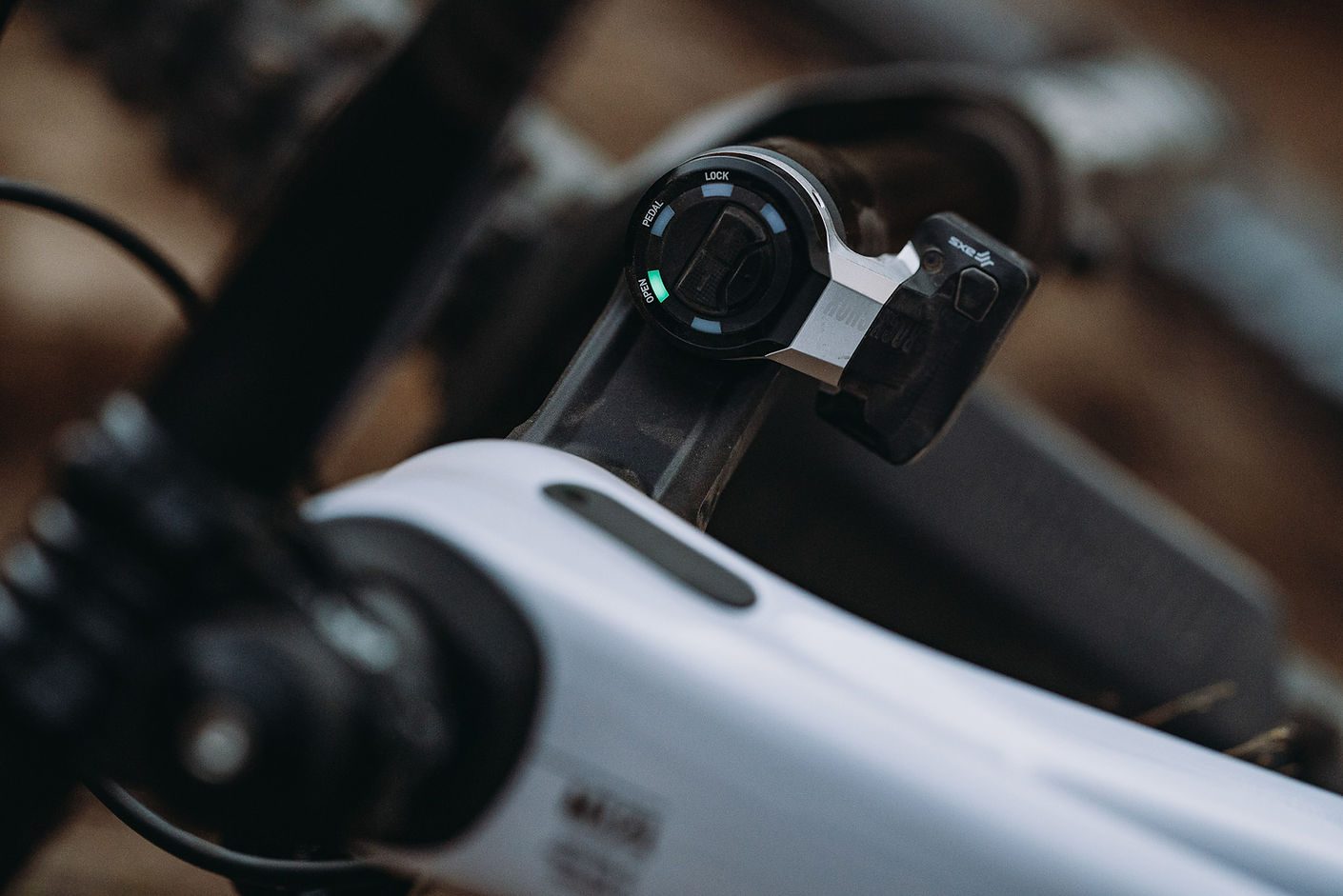
FLIGHT ATTENDANT
The only automatic suspension system that listens to the rider and responds in real-time. Flight Attendant uses a suite of sensors to read rider and terrain inputs to anticipate the perfect suspension position—enabling you to ride faster, ride longer, and spend less energy adjusting your suspension and more time focusing on what matters most: the unbridled joy of riding.
SRAM AXS TECHNOLOGY
The unmatched interface you’ve come to expect. Crystal clear communication between components. Beautiful cable-free design, meticulously crafted to disappear.
SENSE IT FIRST
A suite of sensors onboard your fork, rear shock and crankset work in unison to detect every bump, pitch, and pedal stroke made. Flight Attendant is the only automatic suspension system that listens to the rider and paints a picture of the complete riding experience in real time.
FUELED BY SCIENCE. FEELS LIKE MAGIC.
Developed over thousands of trail miles around the world, Flight Attendant’s on board
algorithm is scientifically engineered to do the complex thinking for you. It analyzes the
constant flow of ever-changing data to anticipate the perfect suspension setting for the rider and what the trail demands.
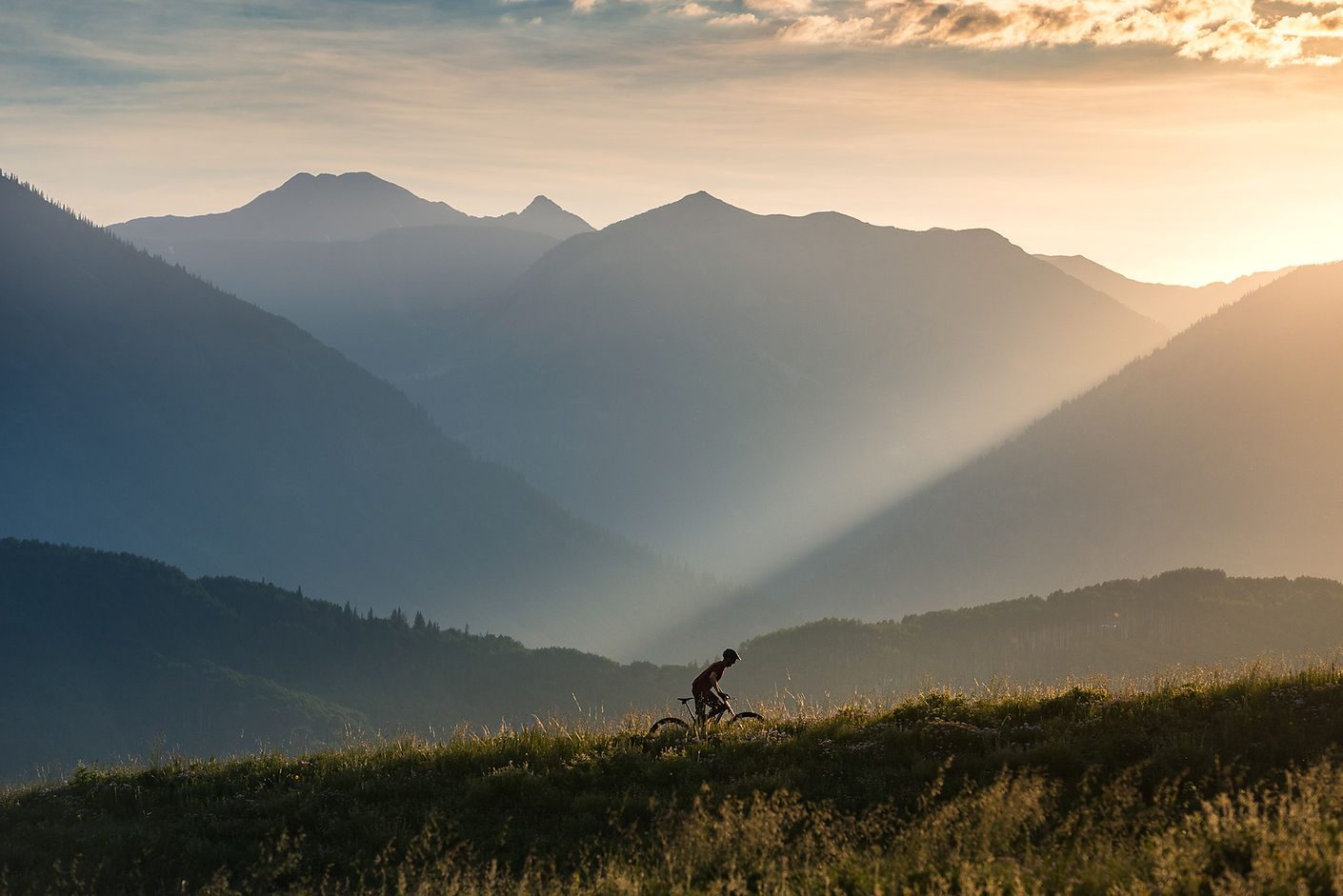
FURTHER FASTER
Your burly Enduro bike becomes fit for longer climbs. Your trail bike becomes as efficient as a cross-country world cup steed. Get the most return on every pedal stroke, weight shift, and micro adjustment you make, there’s no energy wasted. Flight Attendant capitalizes on every ounce of effort you put in, optimizing your suspension and maximizing your bikes performance all while you ride. You’ll ride further, faster and with more energy gained.
EFFICIENCY ON DEMAND
Alt: In Auto Mode, Flight Attendant deciphers every input and sends its commands to the AXS-enabled fork and rear shock to instantly react. It does the critical thinking for you. Your suspension is always in the right position at exactly the right time, automatically shifting between Open, Pedal and Lock compression positions before the thought ever crosses your mind.
Life isn’t black and white, or as easy as on or off. Balance is often found somewhere in-between. A 3-position system provides more choice and efficiency gains in more situations for the rider. With Open, Pedal and Lock compressions positions, the Flight Attendant algorithm finds the best connection to the trail, providing the right level of support and comfort at the same time.
OPEN
The moment you point your bike downhill or your tires hit a big impact, Open position allows your suspension to utilize the full amount of available travel while feeling plush and ready to absorb the next big hit.
PEDAL
The sweet spot for efficiency. Pedal position stiffens your suspension just the right amount to maintain traction, reduce excessive suspension movement and deliver the most output from energy well spent.
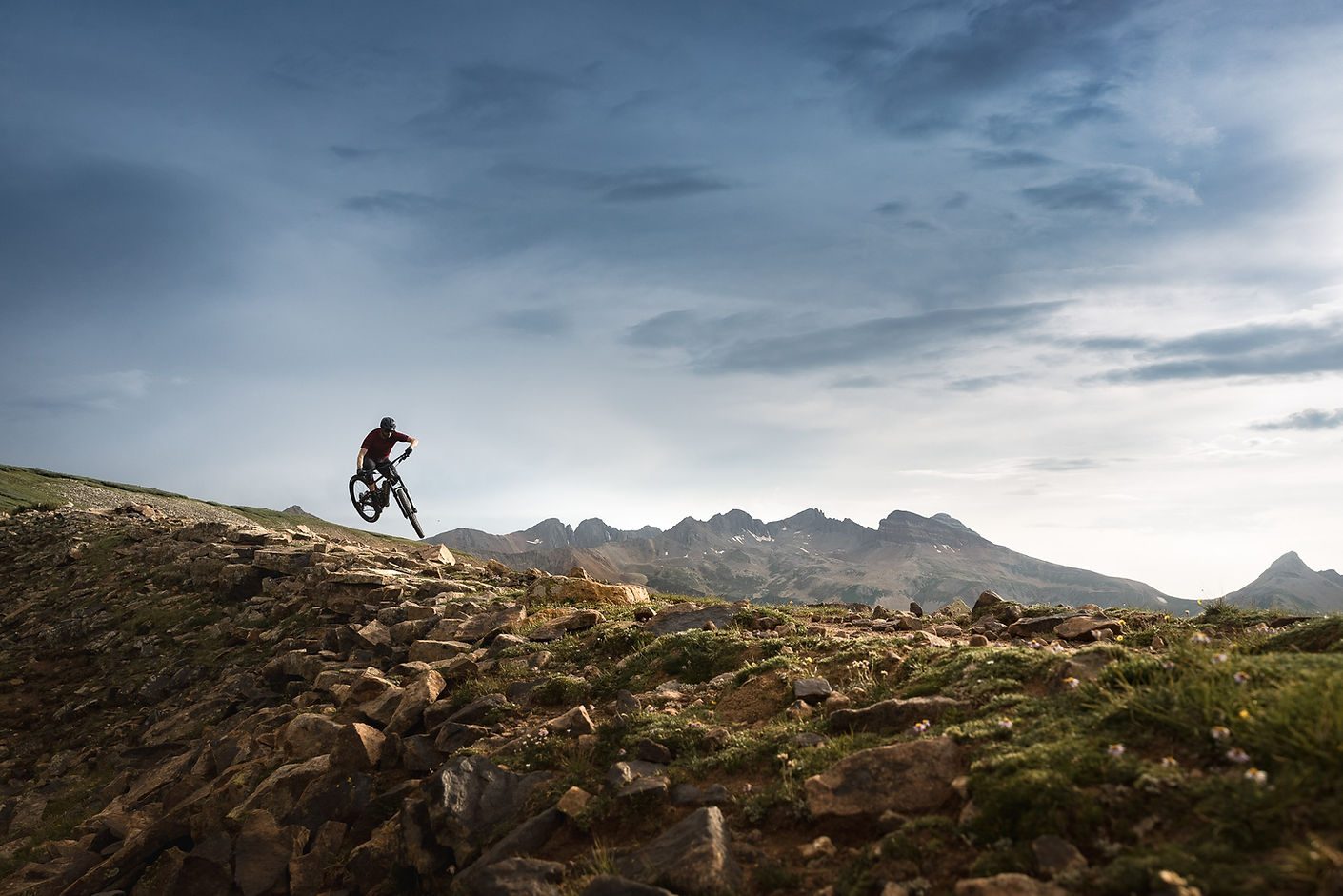
LOCK
Power to the pedals. In Lock position, the suspension is at its firmest setting to maximize your effort as you put the power down on those long grinds.
FLIGHT ATTENDANT MANUAL MODE
On those rare occasions when you need to opt out of Flight Attendant’s Auto Mode, the control’s there if you need it. Disable Auto Mode and cycle between suspension positions on demand. Manual Mode can be accessed through either the Flight Attendant Control Module, or on-the-fly with a click of the assigned paddle on the RockShox AXS Left hand 2-Button Controller.
FLIGHT ATTENDANT OVERRIDE MODE
A shortcut to your desired suspension position. Press and hold the assigned paddle on your AXS controller, Override Mode turns off Auto Mode and shifts the system into your designated Override position: Open, Pedal or Lock. After that all-out sprint, or when ready, click the same paddle again to re-engage Auto Mode, and never miss a beat.
GET HOME SAFE
Built in peace of mind. If a system problem arises, like a critically low battery, Safe Mode automatically places the suspension system into the Open position so you can get home safe to recharge.
FLIGHT ATTENDANT BIAS ADJUST
Bias Adjust give you the power to fine tune how Flight Attendant reacts in Auto Mode to your personal ride style and preference. From the factory, the system is set right in the middle: Zero Bias, for an effective balance of all three suspension positions. Based on personal ride style, adjusting Bias instructs the Flight Attendant system to favor the Open or Lock suspension positions.
When you Bias the system towards Lock (+1 or +2) Flight Attendant maximizes rider efficiency and the return on every pedal stroke with the system favoring the firmer Lock position, as often as possible. When you Bias the system towards Open (-1 or -2) the system will favor the Open position more often, with less likelihood of Lock.
There’s no right or wrong, Bias Adjust is all about choice and fine tuning the feel of the system to better match your style. Adjust your Bias at any time through the Flight Attendant Control Module or a simple tap on the AXS mobile app.
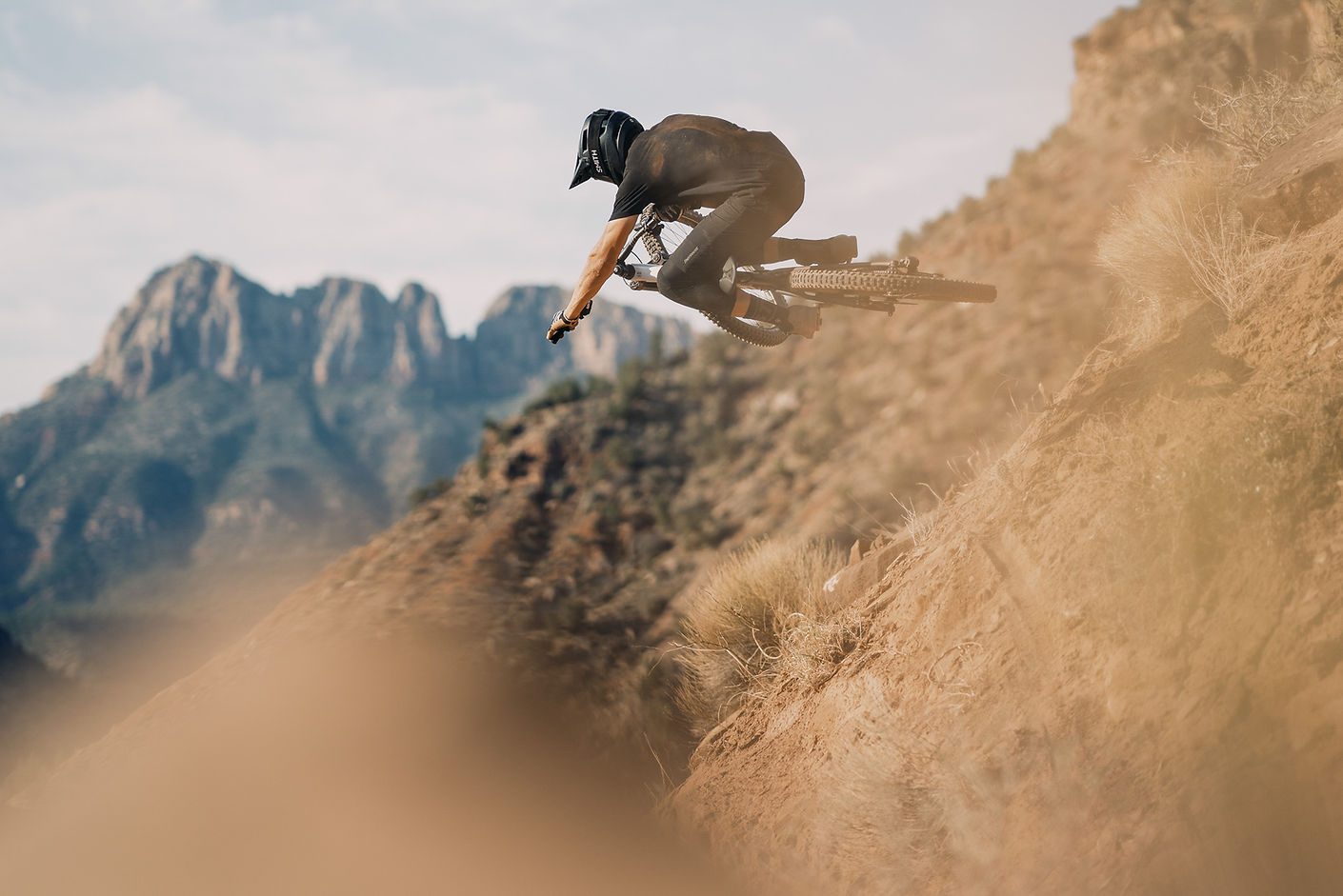
FLIGHT ATTENDANT LOW SPEED COMPRESSION ADJUST
Dial in your ideal performance and feel on the fork and shock with 10 Low Speed Compression settings. Tunable at any point through the Flight Attendant Control Module or via the SRAM AXS App.
THE APP AT THE CENTER OF IT ALL
AXS-enabled and completely customizable. Flight Attendant is an integrated part of the AXS ecosystem. Use the SRAM AXS App to adjust settings for your entire AXS system, Flight Attendant included. Build a bike profile, customize your controls, check battery charge status, and update firmware as needed right from your phone.
GET RIGHT TO THE RIDE: INITIAL SET UP
Out of the box or fresh from your favorite retailer, set up is simple. Pair your AXS components, set up your front and rear suspension, calibrate the Flight Attendant system, and you’re done! Flight Attendant remembers everything. Next time, get right to the ride.
FLIGHT ATTENDANT CONTROL MODULE
This is the central hub. Flight Attendant’s Control Module lives aboard your fork, collecting data from sensors, analyzing trail and rider inputs, and orchestrating your Flight Attendant components. Located within reach, the Control Module makes it easy to adjust and fine-tune on the fly.
PIKE ULTIMATE FLIGHT ATTENDANT
Pike Ultimate was built for the all-day epic. Now featuring Flight Attendant, we’ll see how far that truly goes. Pike Ultimate Flight Attendant has a new look with an ultra-light build, optimized travel to stiffness ratio and plenty of drool worthy new features. Designed for trail riders not looking to compromise on features or performance.
LYRIK ULTIMATE FLIGHT ATTENDANT
Lyrik Ultimate Flight Attendant sets a new standard for power and efficiency in an all-mountain fork. Featuring a hyper-focused new chassis that’s lighter while still critically stiff for Lyrik’s legendary performance and versatility.
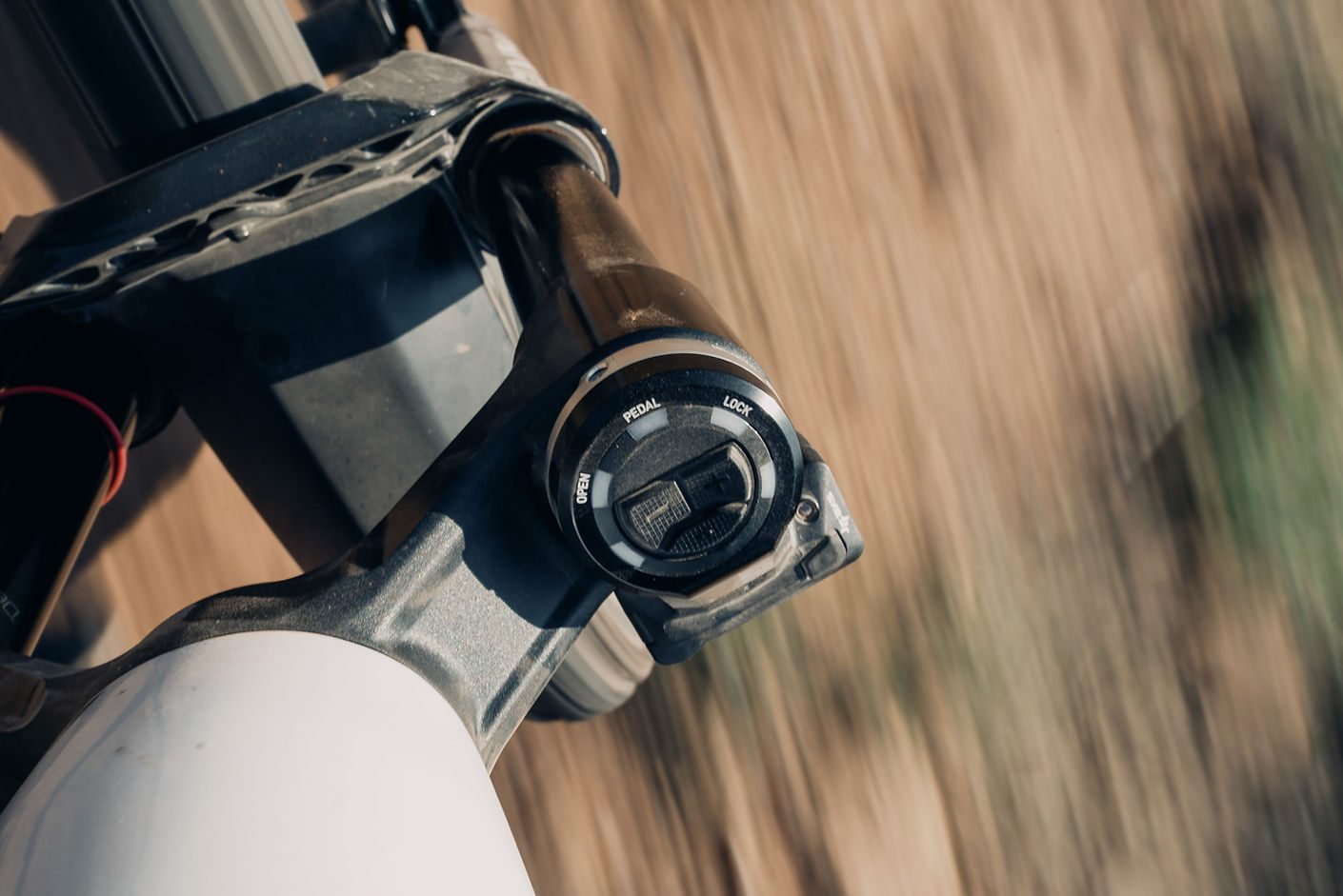
ZEB ULTIMATE FLIGHT ATTENDANT
With Flight Attendant, ZEB Ultimate redefines how far you can go on an enduro bike. Long on travel, short on excuses, ZEB Ultimate Flight Attendant has an updated chassis with more features than ever before.
INTRODUCING BUTTERCUPS
Low amplitude, vibration reducing material pucks... but we like to call them ButterCups. ButterCups block 20% of unwanted “trail chatter” before it reaches your hands. The gold housings on the end of the damper and air spring hold two rubber pucks that absorb the high frequency vibrations before they travel through the fork and into the handlebar. ButterCups reduce overall hand and arm fatigue and will leave you feeling fresh with more control over the trail.
FEATURED IN:
Pike Ultimate Flight Attendant
Lyrik Ultimate Flight Attendant
ZEB Ultimate Flight Attendant
INTRODUCING CHARGER FLIGHT ATTENDANT
Charger Flight Attendant electronic damper features an automatic 3-position compression adjustment (Open/Pedal/Lock) with 10 clicks of independent adjustable Low Speed Compression and 20 clicks of adjustable rebound.
FEATURED IN: Pike Ultimate Flight Attendant
Lyrik Ultimate Flight Attendant
ZEB Ultimate Flight Attendant
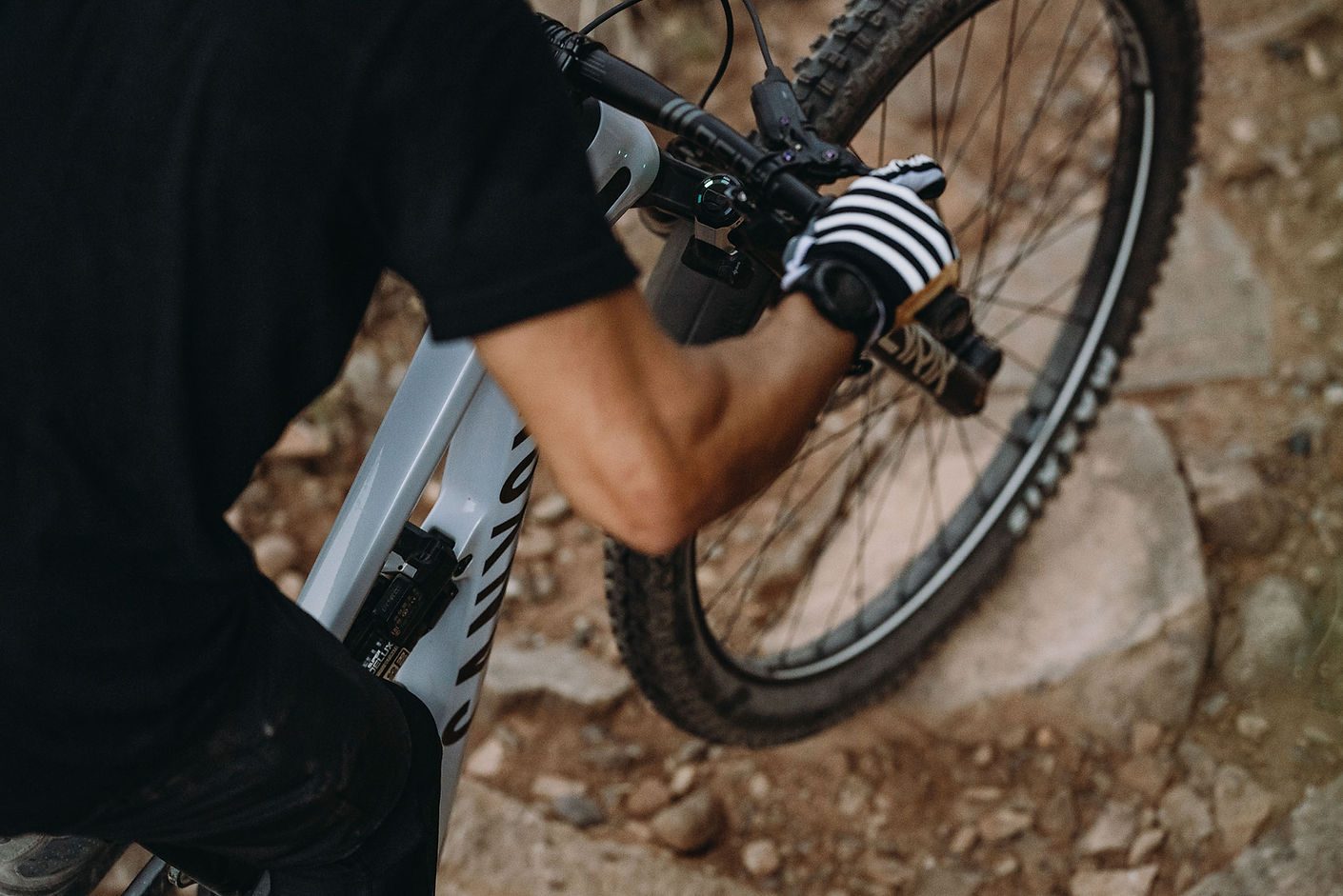
INTRODUCING DEBONAIR+
DebonAir+ is built to strike the perfect balance of what riders really want: butter-like small bump feel, increased support throughout the travel, and higher overall ride height for more confidence when things get steep.
FEATURED IN: Pike Ultimate Flight Attendant
Lyrik Ultimate Flight Attendant
ZEB Ultimate Flight Attendant
INTRODUCING PRESSURE RELIEF VALVES
Pressure Relief Valves eliminate unwanted air pressure build up in the lower leg caused by variations in altitude or temperature. With the press of a button or two, Pressure Relief Valves restore the lower leg balance for optimum sensitivity and a premium fork feel.
FEATURED IN: Pike Ultimate Flight Attendant
Lyrik Ultimate Flight Attendant
ZEB Ultimate Flight Attendant
STIFFNESS REDUCERS
Using torque caps add an additional 5% torsional stiffness to our forks. But if you aren’t interested in “free stiffness” all Flight Attendant forks will now feature the option to run a standard hubcap via a new bolt-in adapter. Hubcap adapters are easy to install for those who choose to wave the free stiffness.
FLIGHT ATTENDANT REAR SHOCK MOTOR MODULE
Measuring and reading real-time terrain inputs, the rear shock plays an important role in delivering the ultimate Flight Attendant ride experience.
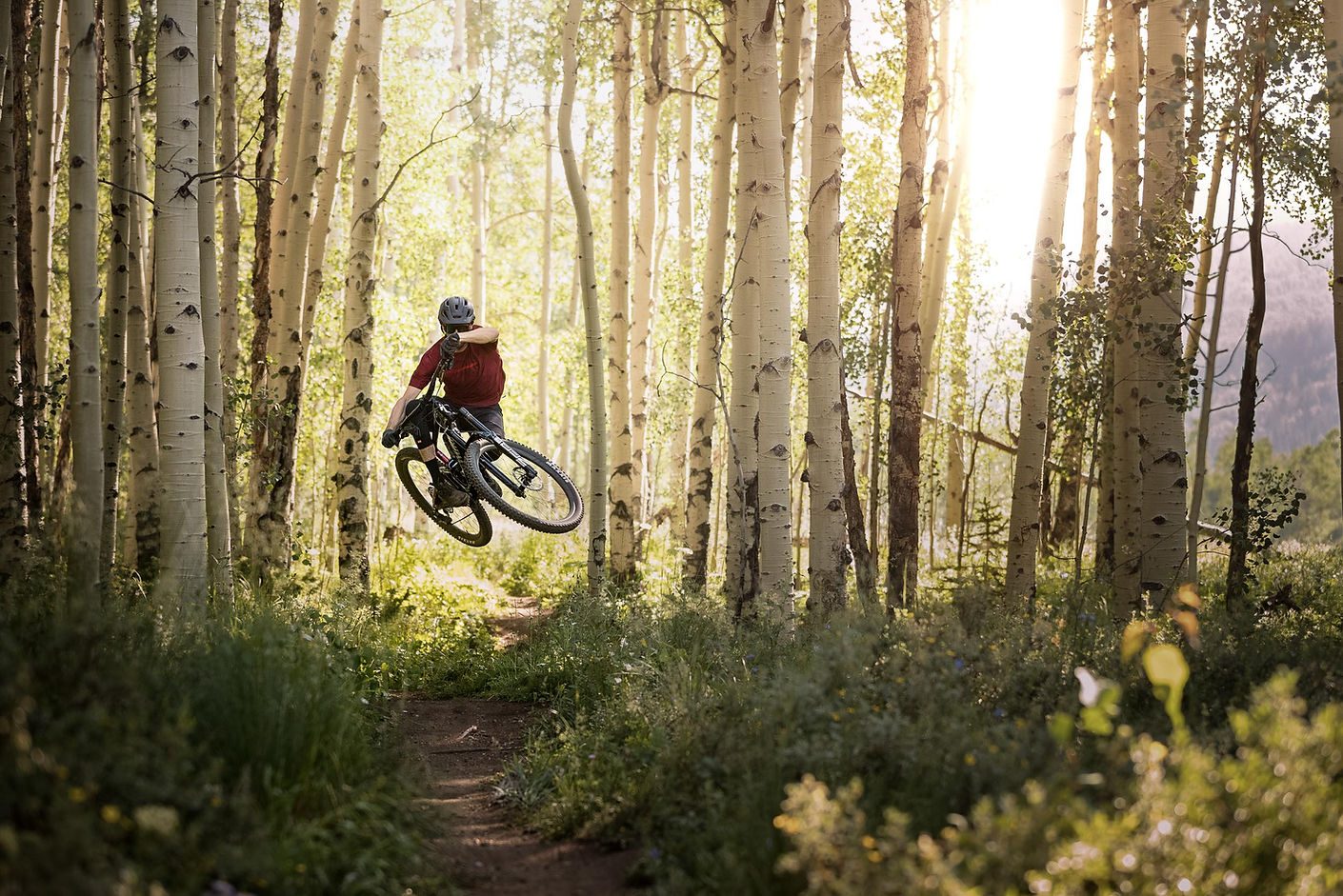
SUPER DELUXE ULTIMATE FLIGHT ATTENDANT
Super Deluxe Ultimate Flight Attendant is built to balance uphill prowess with proven downhill performance. The new electronic 3-position RCT3 Flight Attendant damper gives you as much control while pedaling as on those hard-charging, wild descents.
FLIGHT ATTENDANT PEDAL SENSOR
The crankset’s built-in pedal sensor receives real-time pedaling inputs, notifying your Control Module the moment you start (or stop) pedaling.
SRAM XX1 / X01 FLIGHT ATTENDANT CRANKSET
New XX1 and XO1 Eagle Flight Attendant carbon tuned crankset is our lightest, stiffest and strongest to date. Enabled by SRAM AXS and equipped with a small pedaling sensor to read real-time rider inputs, notifying the Flight Attendant control module the moment you move.
ROCKSHOX LEFT HAND 2 BUTTON AXS CONTROLLER
Access the power of AXS with only the tip of your thumb. The new RockShox Left hand 2 Button Controller now elevates your ride with the powerful new tech of Flight Attendant. Cycle through suspension positions, turn on Override Mode, and activate the RockShox Reverb AXS dropper post all with two buttons.
Review: Giro Xnetic Trail Gloves
A good glove is not always super easy to find. Yes, there’s a ton on the market but they’re all not the same and riders want different things. For me, like a lighter glove, I like to get feedback from the bar. But I do want protection and need em’ to be robust. Giro has developed the new Xnetic Trail glove from techniques they pioneered in their footwear. The end product is a seamless one-piece glove. Ok, so what is Xnetic anyway? It features a TPU skeletal system bonded to a knit material. It’s sock-like comfort which offers suppleness and breathability. It’s also DWR-treated which makes it repel water and they have reinforced rubber to enhance abrasion and durability. That’s a lot packed into a glove, aye?
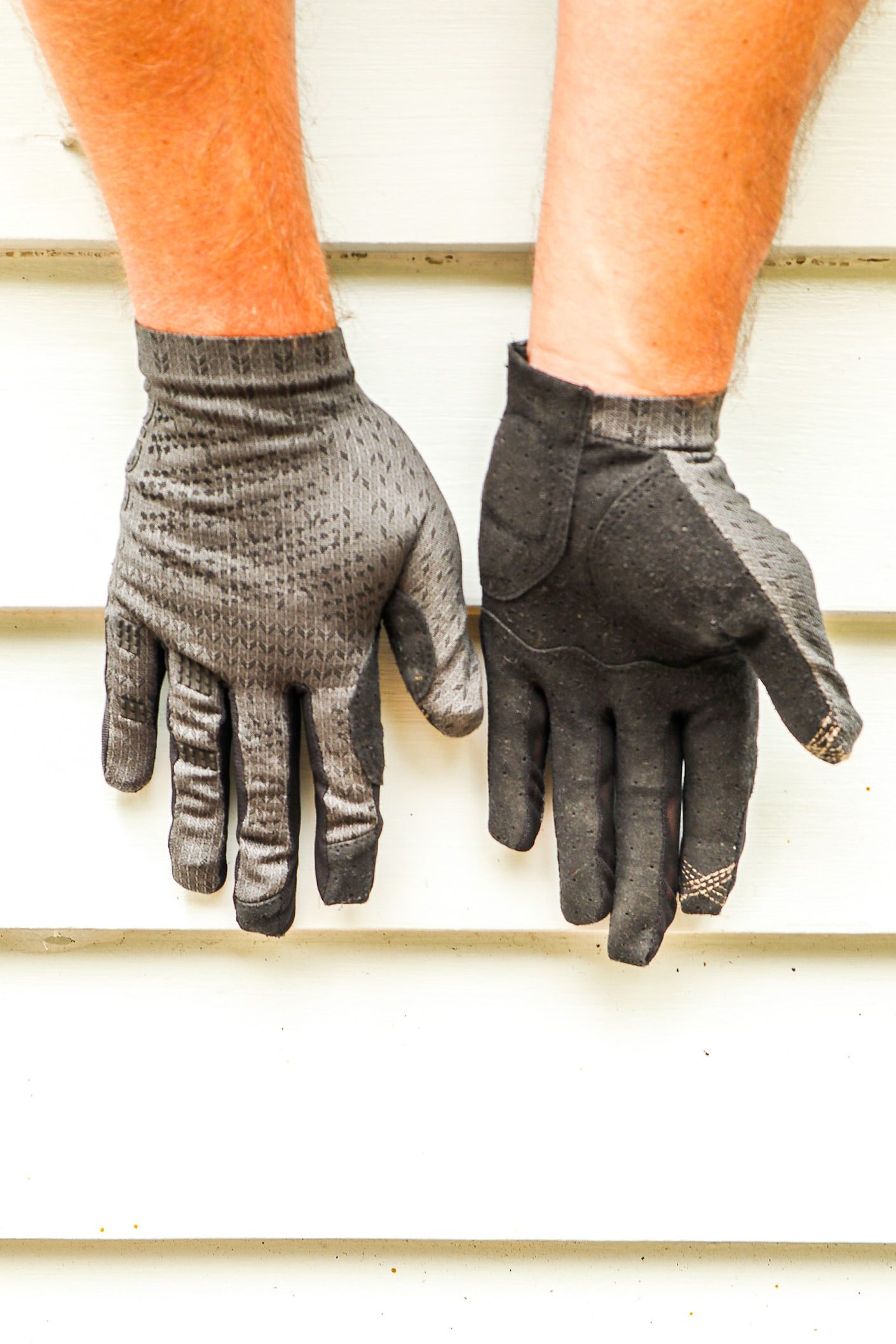
I’ve been riding with these gloves for a few months now. Firstly, they fit super well. No bunching whatsoever with these! This is down to the 3-piece palm construction that allows movement without scrunch whilst maintaining the bar feel. Secondly, they’re uber comfy. Thanks to the stretchy, strapless cuff help bolster comfort further and keep wrist movement unrestricted, plus it means there’s no Velcro to snag jersey sleeves. Thirdly, you can use your phone with them. So, now you don’t have to ignore your work calls (which you may still want to) and can take a photo. Or do whatever else we use our phones for these days.
On the trail the Xnetic gloves offered good grip, I had control whilst still keeping bar feel. The gloves felt minimal and wrapped snugly around my palm. I’d move my hand and the gloves go with them – no fuss or bunching. On (too many) occasions when I did fall, they kept my hands protected. I’d rather keep my hands scuff-free and these gloves did a solid job of that. In the wet weather, they kept my hands dry as the weather shred off them. I’ve been running these for a few months and will be using them for many more months to come. So, they might cost you, but they really are well made, damn comfortable and minimal with good protection.
Distributed by Worralls / RRP: $74.95
Reviewed by Liam Friary


